The Dodge Charger has long been synonymous with American muscle, roaring V8 engines, and tire-shredding power. However, as the automotive world pivots towards electrification, Dodge is boldly stepping into the future with the 2024 Charger Daytona, an all-electric muscle car that aims to redefine performance for a new era. As a content creator for cardiagnosticnearme.com and an auto repair expert, I’ve been keenly following this transition, and the arrival of the Charger Ev is a landmark moment for enthusiasts and the industry alike.
For over a decade, Dodge enjoyed a golden age, largely thanks to its commitment to raw power and iconic models like the Charger and Challenger, fueled by the legendary Hellcat V8. But times change, and with the Hellcat era concluding, Dodge is now championing “e-Muscle,” starting with the groundbreaking 2024 Charger Daytona. Having finally had the chance to experience this electric beast firsthand, it’s clear that Dodge isn’t just dipping its toes into the EV market; they’re diving in headfirst, and the result is surprisingly compelling.
There will undoubtedly be purists, the die-hard Mopar fans who believe that true muscle can only come from gasoline-guzzling V8s, who will resist this electric transformation. They might see this Charger EV as a betrayal of heritage. But progress is inevitable. This review might ruffle some feathers, but it’s essential to understand that the e-Muscle era is not coming – it’s here. And Dodge’s initial foray into electric muscle is not just a novelty; it’s a genuinely impressive machine.
Remembering the Legacy: The LX Platform and the Shift to Electric Chargers
Let’s be honest, the outgoing LX platform underpinning the previous Charger and Challenger was showing its age. Parts of its architecture traced back to the mid-90s Mercedes-Benz W210 E-Class. Yet, age didn’t diminish its appeal.
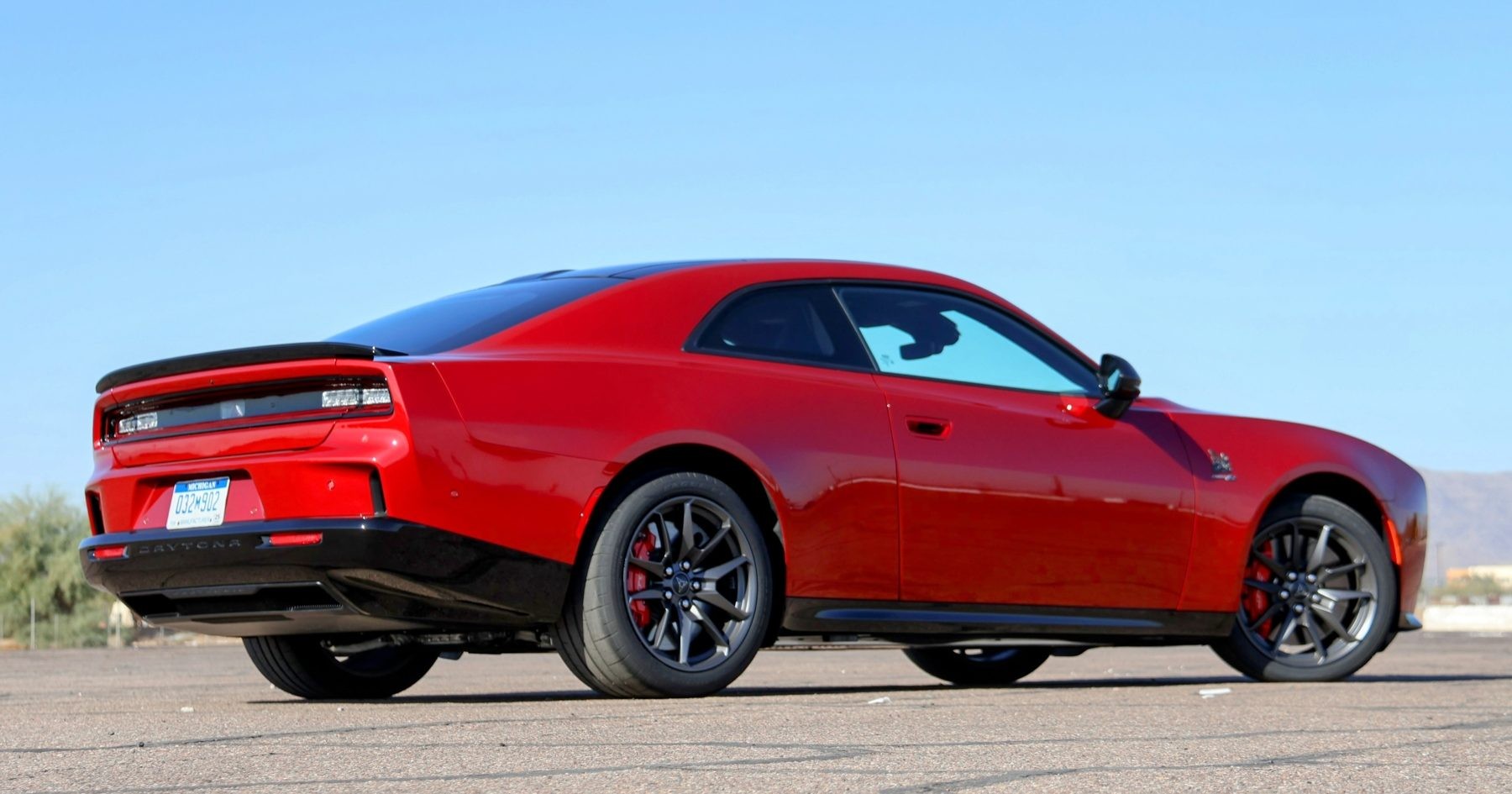 Img 8334~2
Img 8334~2
Despite not being the sharpest handlers in the sports car realm, the Charger and Challenger offered surprisingly capable driving dynamics for large muscle cars. However, by the early 2020s, it was undeniable that this platform couldn’t keep pace with evolving emissions standards, fuel economy demands, and stringent safety regulations.
The merger forming Stellantis led to the development of four new platforms, with three destined for North America: STLA Medium, STLA Large, and STLA Frame. STLA Small caters to other global markets. STLA Frame is dedicated to body-on-frame trucks and SUVs like RAM and Wagoneer. Crucially, STLA Medium and Large are unibody platforms designed with flexibility in mind.
These platforms are “multi-energy,” capable of supporting full battery electric vehicles (BEVs), internal combustion engines (ICE), and various hybrid configurations. This strategic foresight by Stellantis proves particularly astute given the fluctuating adoption rates of EVs, especially in North America, where the technology has unfortunately become entangled in political debates.
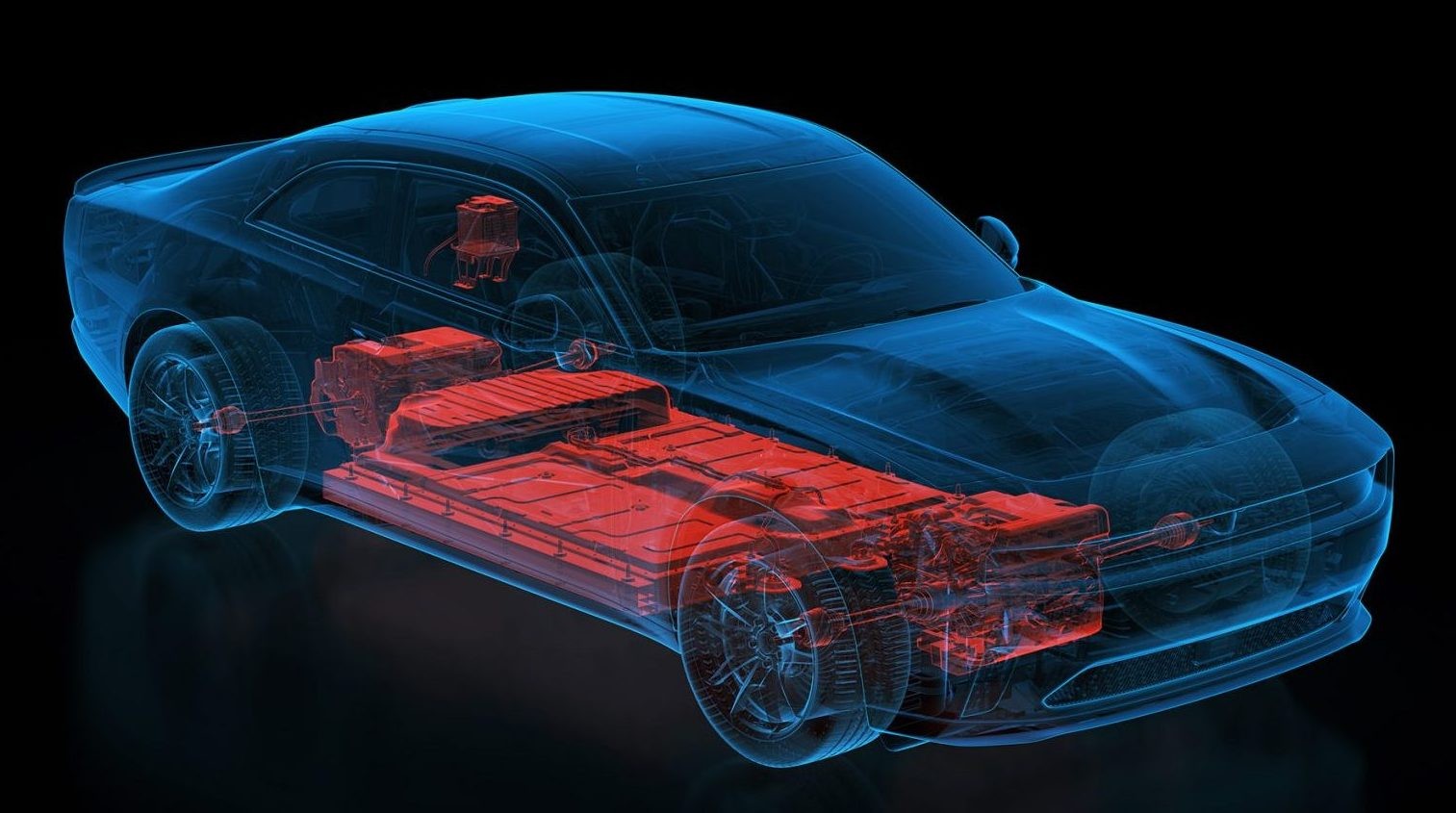 All Electric, All Wheel Drive Dodge Charger Daytona Models Are D
All Electric, All Wheel Drive Dodge Charger Daytona Models Are D
All-electric, all-wheel-drive Dodge Charger Daytona models are powered by a 400V system, delivering V8-rivaling power with zero emissions and instant torque. This illustration highlights the electric drivetrain components of the Charger EV.
While GM committed heavily to electric-only architectures, Stellantis now possesses the agility to tailor propulsion systems to market demands. This adaptability allows them to cater to regions with varying EV adoption rates. States with higher EV interest, like California and Washington, can embrace electric models, while areas less inclined towards EVs can still opt for combustion engines for the foreseeable future.
The 2024 Dodge Charger Daytona is the first vehicle to emerge from the STLA Large platform. Despite being unveiled late in the year, it’s designated as a 2024 model due to initial certifications. The 2025 models are anticipated to debut in spring.
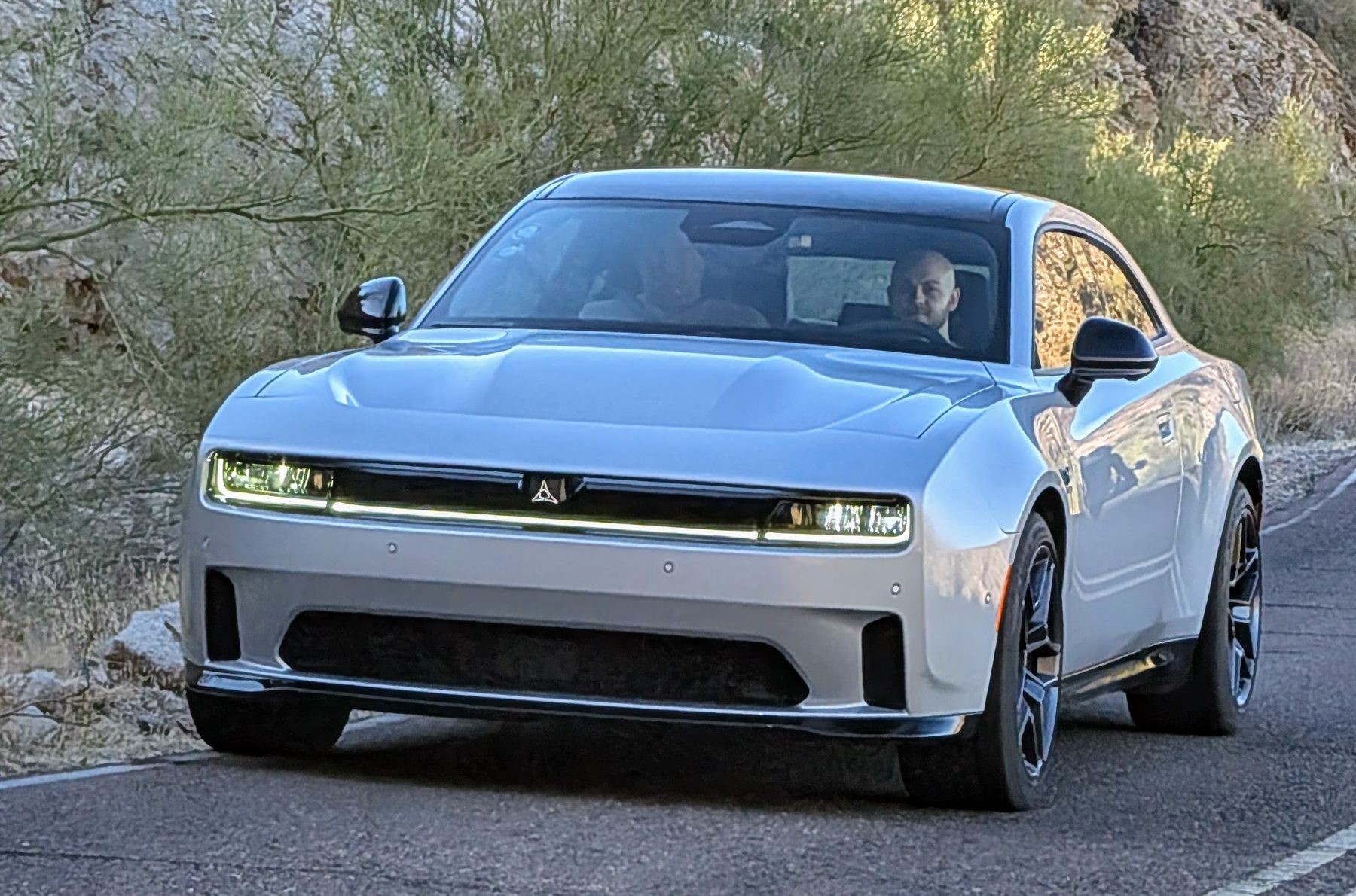 Pxl 20241205 172632356
Pxl 20241205 172632356
Interestingly, Dodge has, for now, shelved the Challenger nameplate, despite its strong sales in recent years. The Charger moniker will now encompass both two-door and four-door models (technically three and five-door hatchbacks).
The “Daytona” suffix signals this is a battery-electric model, a clear identifier for the Charger EV. In mid-2025, Dodge will introduce Charger variants powered by a 3.0-liter Hurricane inline-six engine, simply branded as “Charger.” Hybrid or plug-in hybrid versions are also expected, though their branding remains unconfirmed. At launch, the Charger Daytona EV is available in R/T and Scat Pack trims, the models Dodge presented for testing in Phoenix.
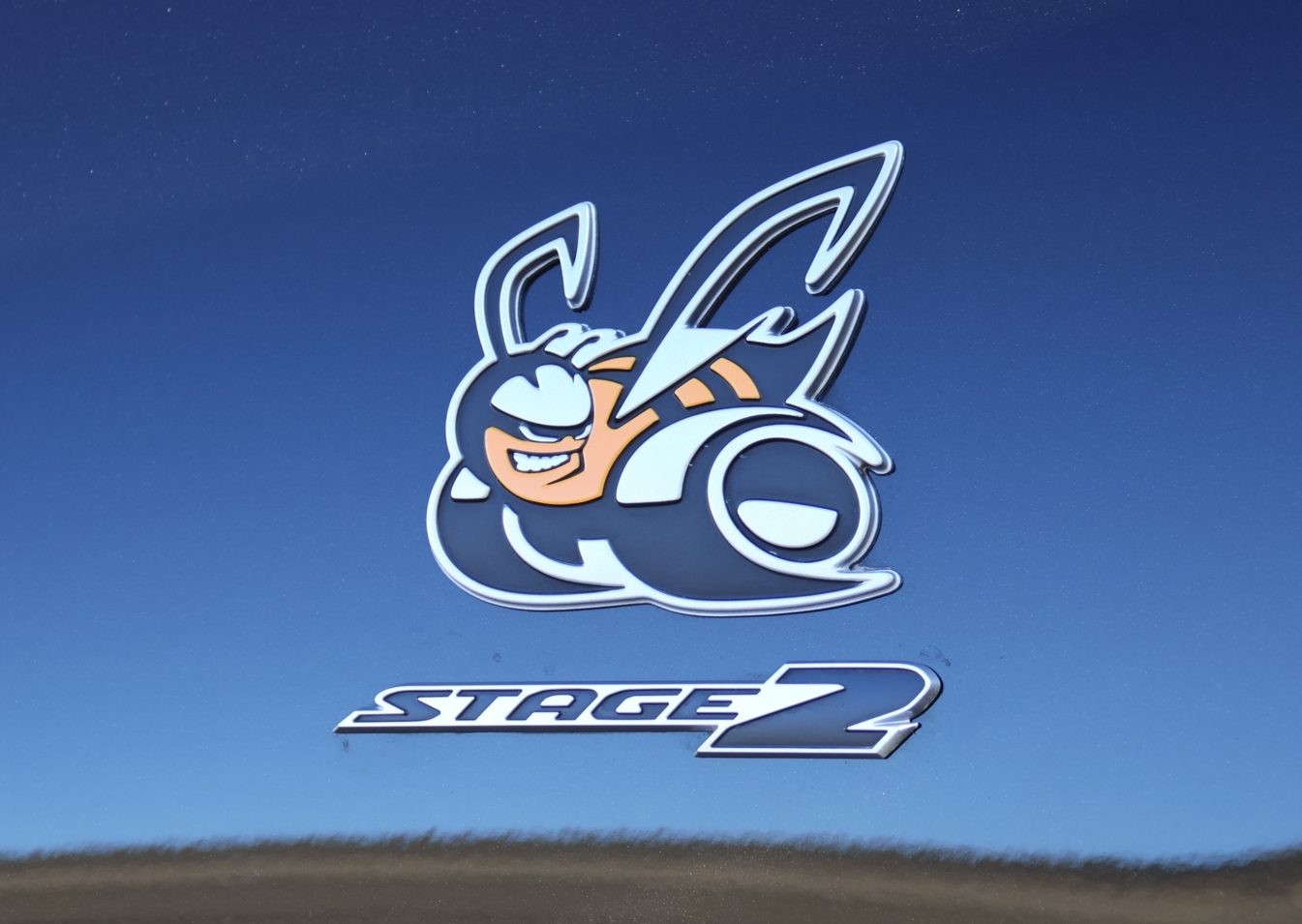 2024 Dodge Charger Daytona First Drive
2024 Dodge Charger Daytona First Drive
Design Evolution: A Nod to Heritage, Embracing the Future of EV Chargers
Thankfully, the new Charger largely avoids overtly retro design, yet it subtly incorporates classic DNA. Unlike the previous LX-generation Chargers, the new model hints at the second-generation Charger (1968-1970) in its overall form. It’s a clean, modern design with a distinct three-box profile. Being an EV, the Charger Daytona doesn’t require a massive front air intake, although Hurricane-powered models will likely feature a different front fascia. Instead, a smaller grille below the bumper suffices for cooling the battery and electric motors, essential components of any charger ev system.
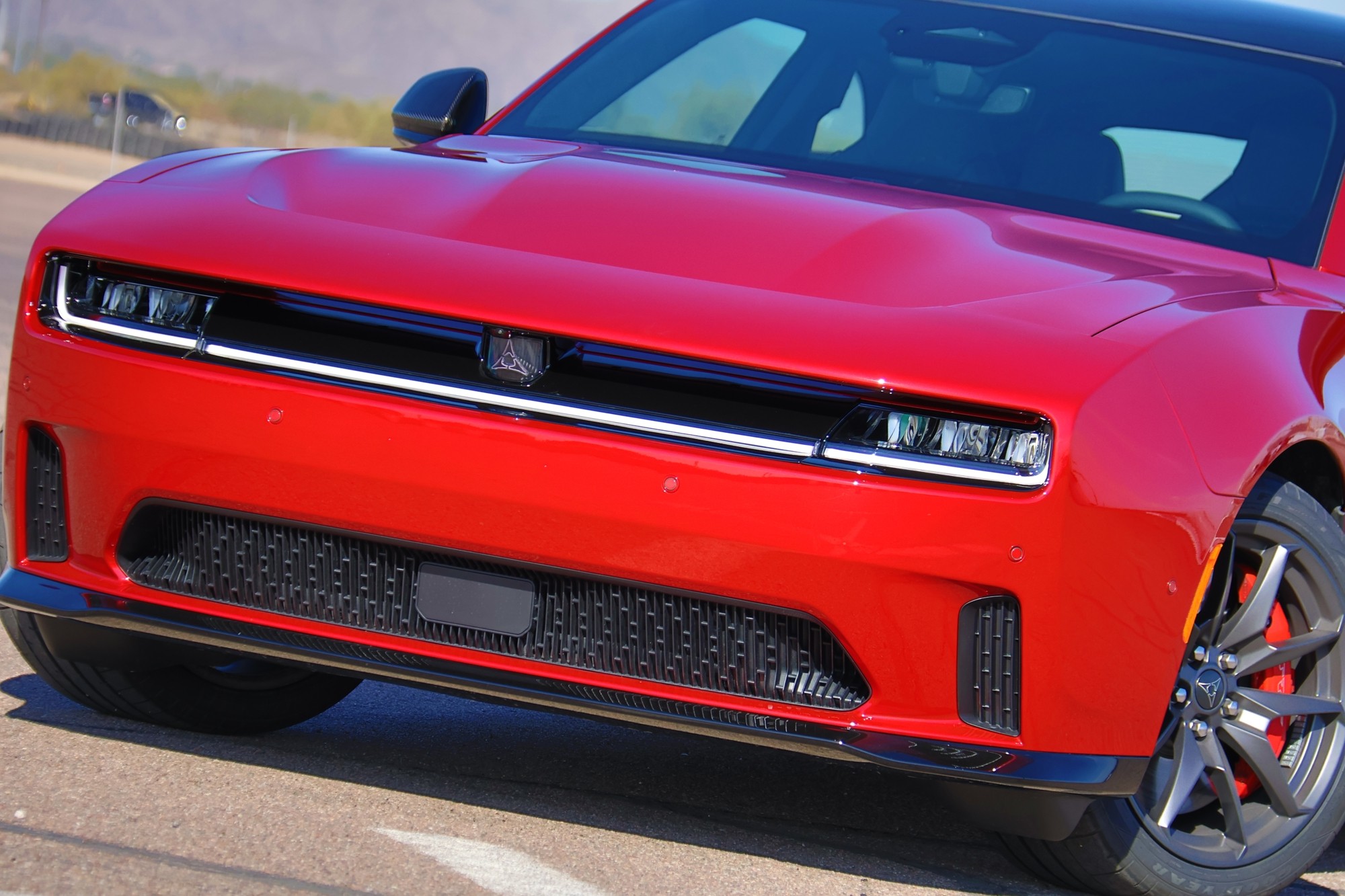 2024 Dodge Charger Daytona First Drive
2024 Dodge Charger Daytona First Drive
The “Daytona” name pays homage to the high-winged 1970 NASCAR homologation special. While that extreme aesthetic wouldn’t translate well to modern tastes, the new Charger features a hood sloping downwards to the mid-point of the front fascia for aerodynamic efficiency, while maintaining an aggressive stance with the “R-Wing” design element.
The R-Wing optimizes airflow over the front, balancing lift and downforce without increasing drag. This slim panel connecting the corners gives the front end a taller, more aggressive look, reminiscent of the 1968 model, with a slot for airflow over the hood. Polestar 3 also employs a similar design approach.
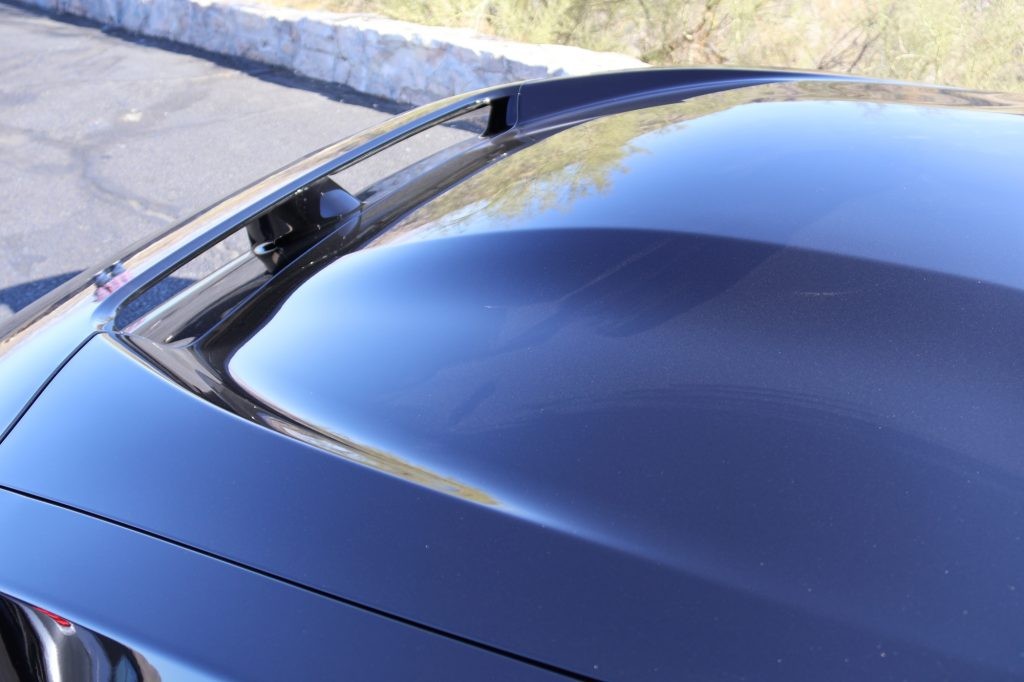 2024 Dodge Charger Daytona First Drive
2024 Dodge Charger Daytona First Drive
The most overt retro touch is the return of the “Fratzog,” the three-pointed logo used on Dodge vehicles from the early 1960s to the early 1970s. Its backlit appearance in early teasers hinted at Dodge’s heritage. While many may not recognize it today, classic Dodge muscle car enthusiasts will appreciate the nod. The Fratzog is prominently placed on a vertical support pillar in the R-Wing’s center, echoing the 1969 model’s vertical splitter. It also appears on the rear fascia, wheel centers, and other locations.
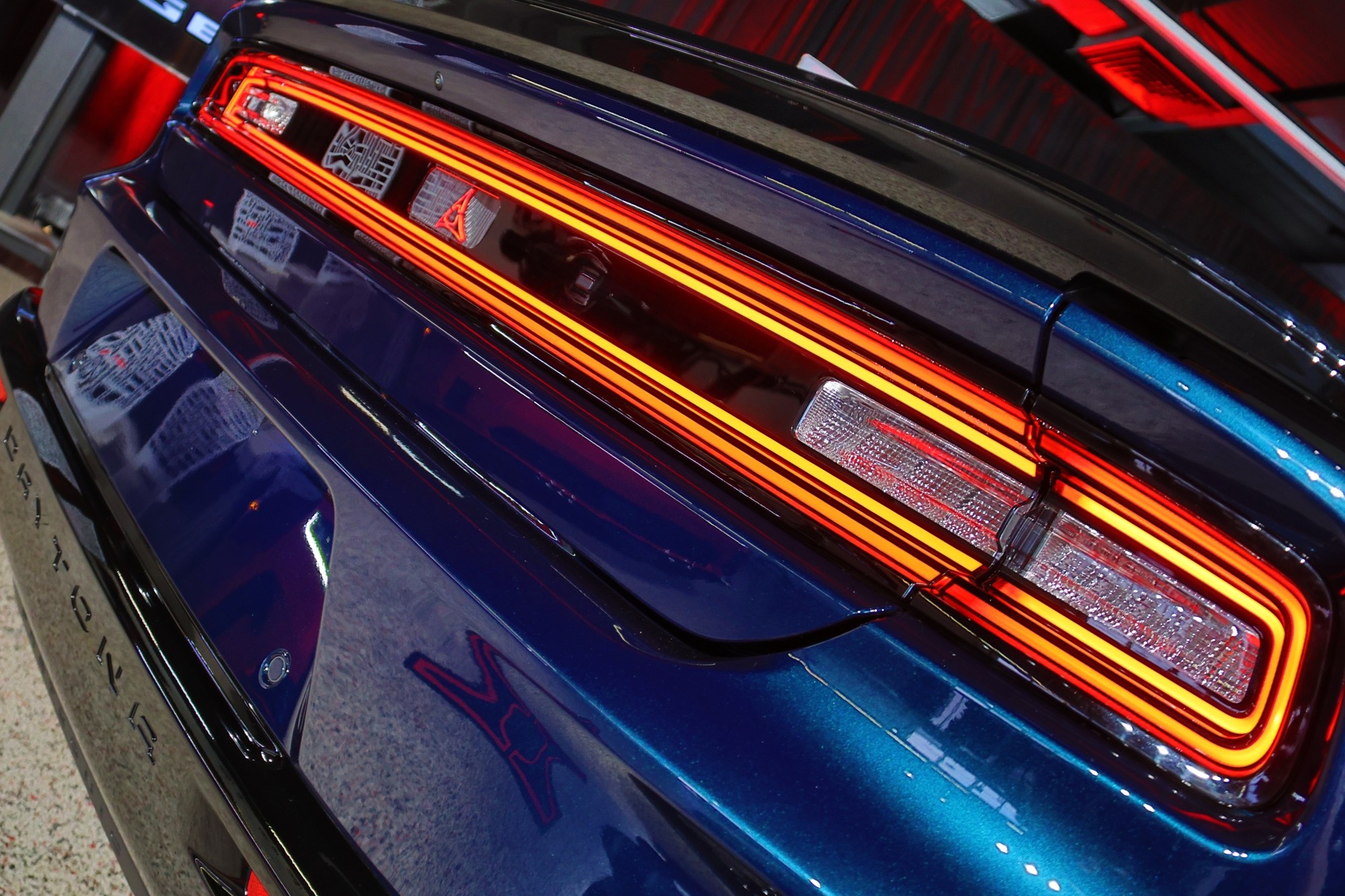 2024 Dodge Charger Daytona First Drive
2024 Dodge Charger Daytona First Drive
The rear features a full-width taillight cluster with Dodge’s signature race track surround lighting. Despite its three-box profile, the Charger is a liftback, with the rear glass and trunk lid lifting as one piece. This design will be particularly beneficial for potential police versions, as the previous Charger’s limited trunk opening posed challenges for loading and accessing equipment.
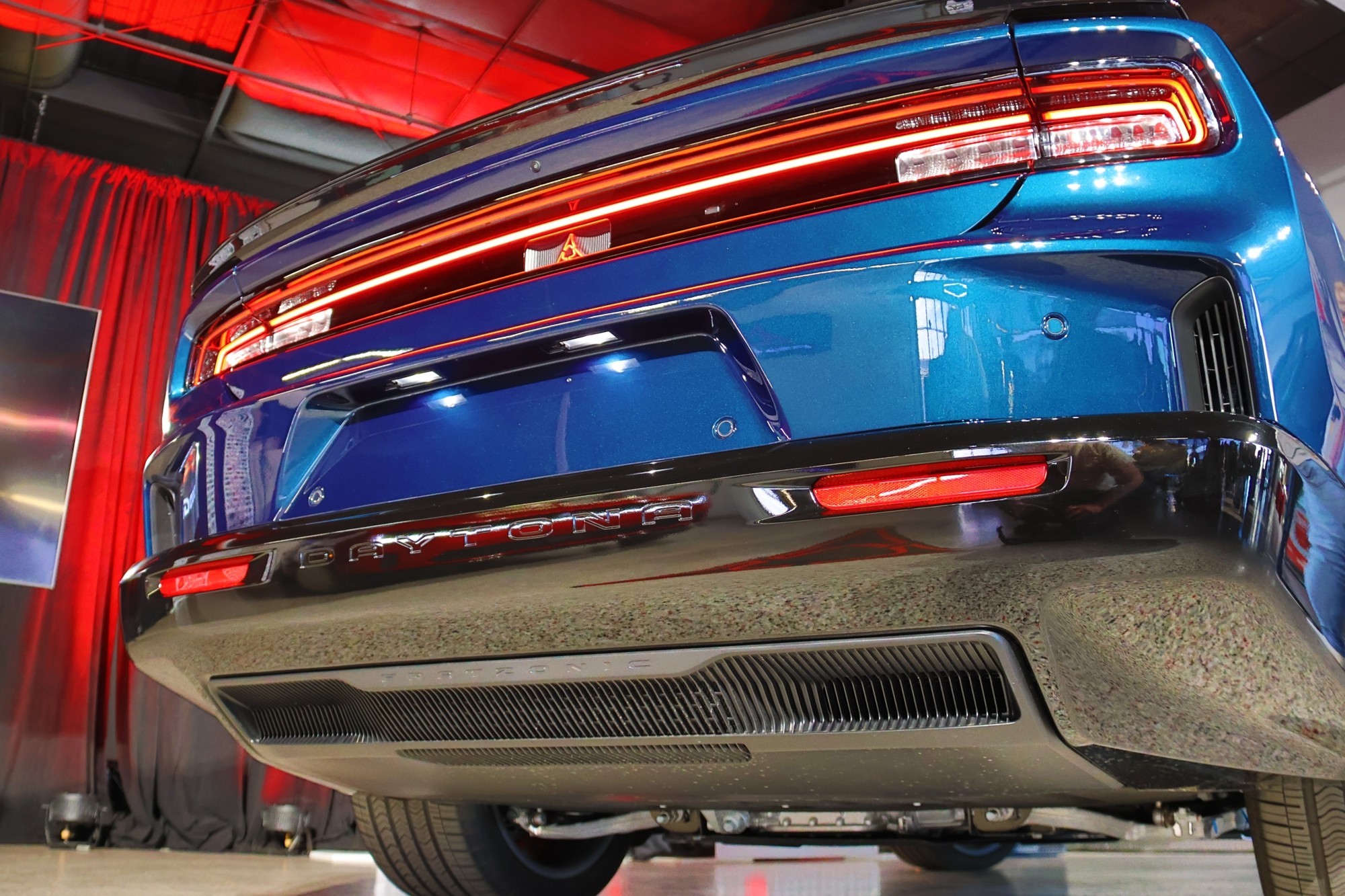 2024 Dodge Charger Daytona First Drive
2024 Dodge Charger Daytona First Drive
Below the rear bumper, a comb-like row of vertical slats is labeled “Fratzonic.” This is the outlet for the Fratzonic Chambered Exhaust, a system designed to create an artificial engine sound, a unique feature in this electric muscle car.
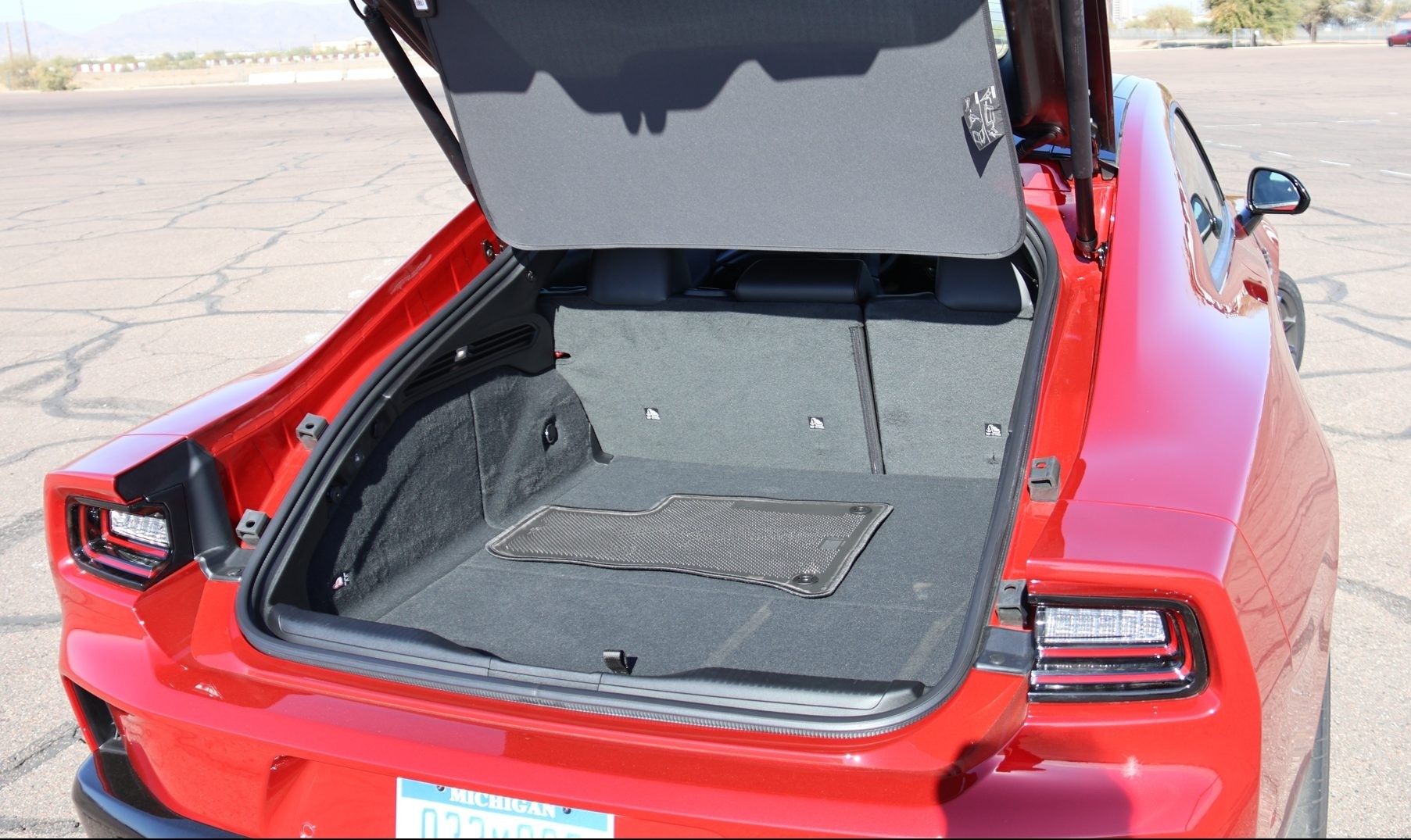 2024 Dodge Charger Daytona First Drive
2024 Dodge Charger Daytona First Drive
In person, the Charger Daytona’s size is immediately apparent. At 206.6 inches long, it’s eight inches longer than its predecessor. The 79.8-inch width is 4.8 inches wider than the standard body and 1.5 inches wider than the widebody version, making all new Chargers effectively widebody models. While slightly shorter than the 1968 model, it’s three inches wider. Despite the increased size, passenger volume is slightly reduced, primarily in rear legroom, but cargo space significantly expands compared to the old Charger and especially the Challenger.
With the rear seats up, there’s 22.7 cubic feet of usable cargo space, up from 16.5 cubic feet in the previous Charger. Folding the seats flat yields 37.4 cubic feet. This liftback configuration is ideal for enthusiasts who frequent drag strips or tracks, easily accommodating extra wheels and tires. Chargers with the Plus pack also include a small frunk, suitable for a backpack or the charger ev cable.
Despite the large hatch opening, the Charger’s structure is significantly stiffer. The body-in-white, without the battery, is 23% stiffer, and adding the battery increases stiffness by 50%.
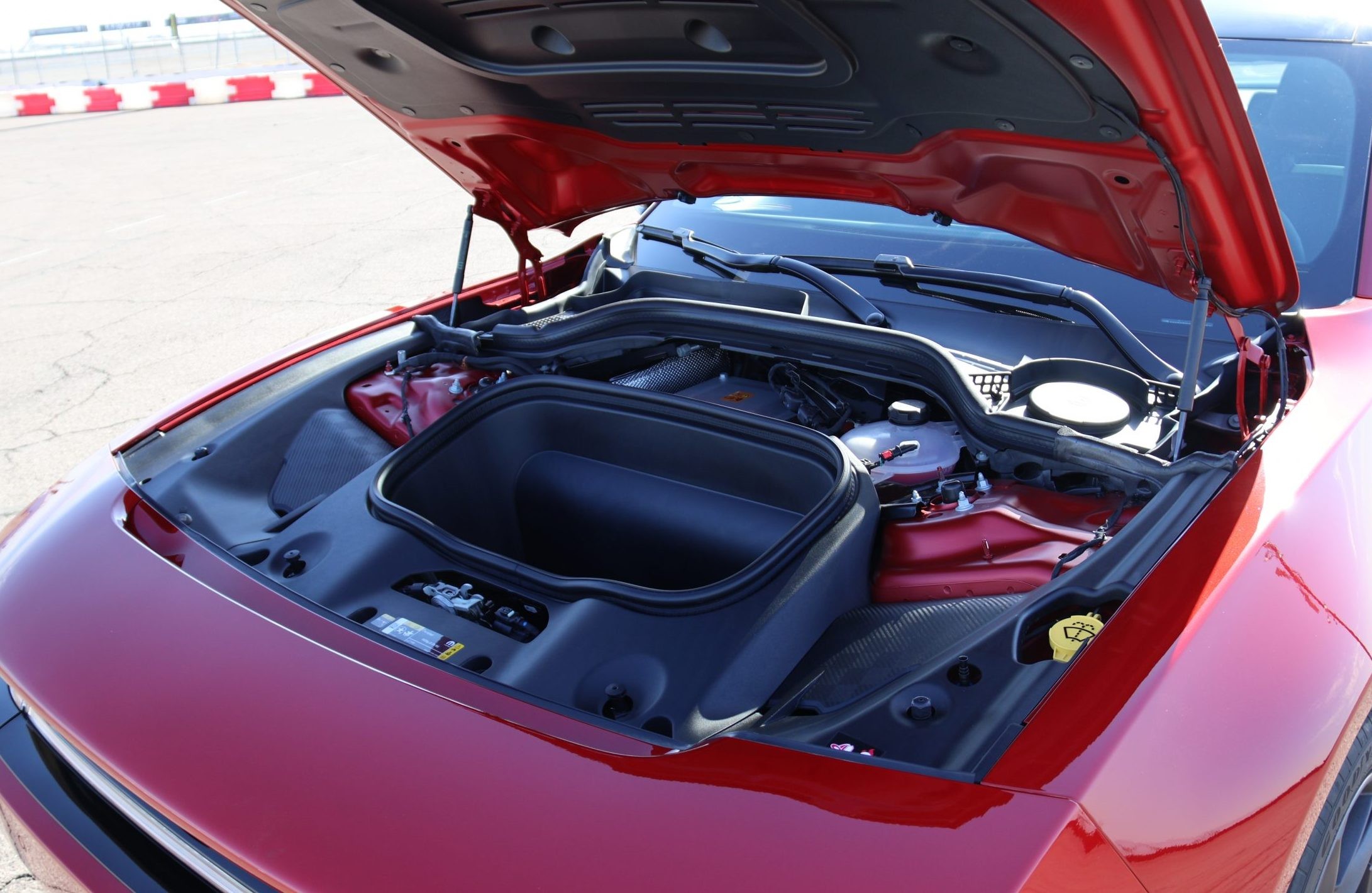 2024 Dodge Charger Daytona First Drive
2024 Dodge Charger Daytona First Drive
Initially, two-door Charger Daytona models will be delivered, with four-door variants following. Exterior dimensions are identical for both, with shared body panels for the hood, roof, and fenders. Only the door openings differ to accommodate the shorter front doors and added rear doors.
Inside the Charger EV: A Modern, Driver-Focused Cockpit
The interior of the new Charger Daytona is undeniably modern. While Jeep and Ram have embraced large screens, the Charger adopts a more restrained approach with two primary displays. All Charger EVs feature a driver-centric 12.3-inch center touchscreen. Base R/T models get a 10-inch instrument cluster, upgradable to a 16-inch unit, which is standard on the Scat Pack.
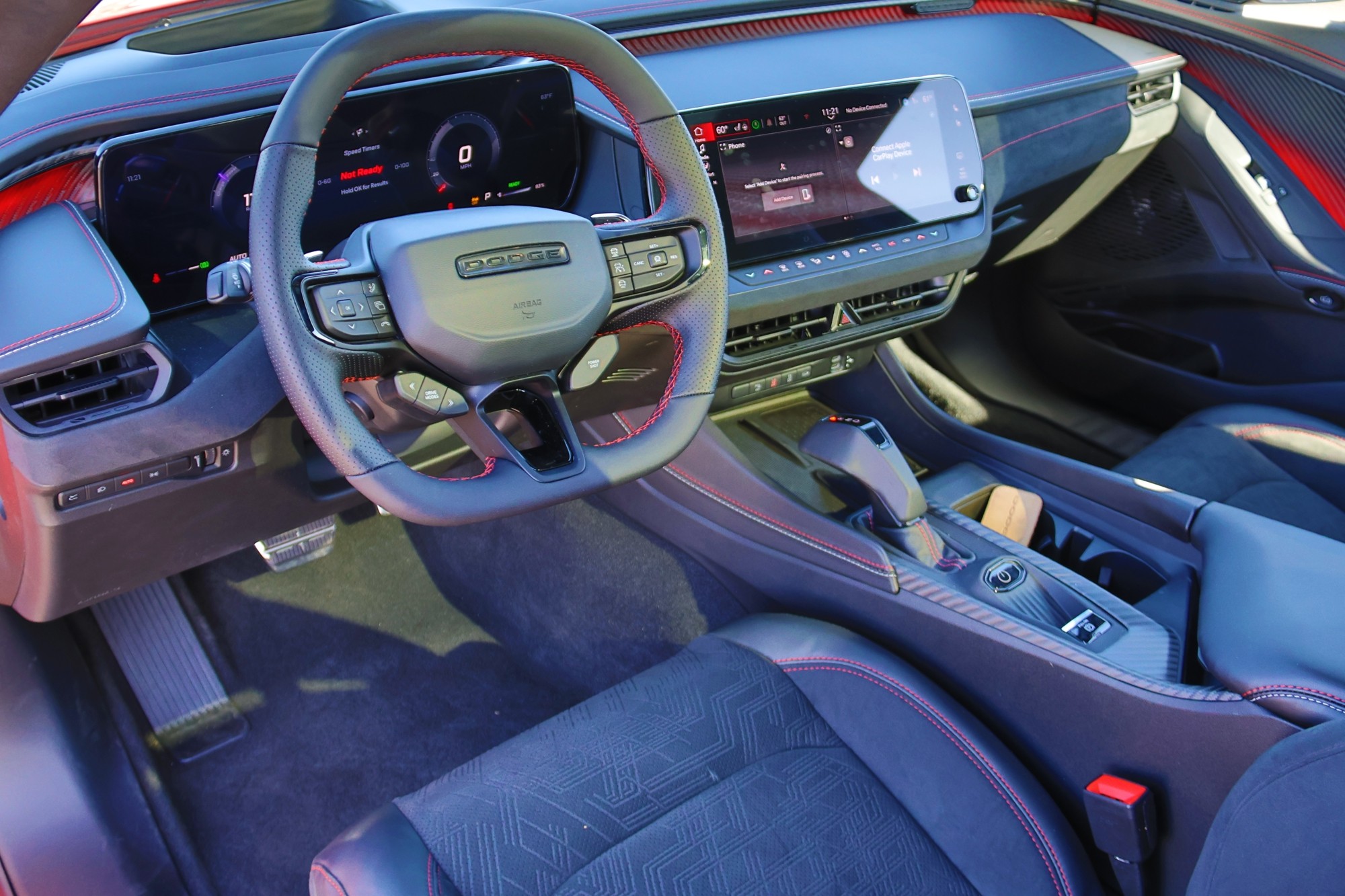 2024 Dodge Charger Daytona First Drive
2024 Dodge Charger Daytona First Drive
While many EV manufacturers opt for column-mounted shifters or touchscreen controls, Dodge retains a traditional feel with a modern interpretation of the pistol grip shifter. Although it’s an electronic interface for the single-speed transmission (common in EVs), it operates like a conventional mechanical shifter, staying in position rather than returning to center. Future high-performance “Banshee” powertrains are expected to incorporate multi-ratio transmissions, but this isn’t yet available.
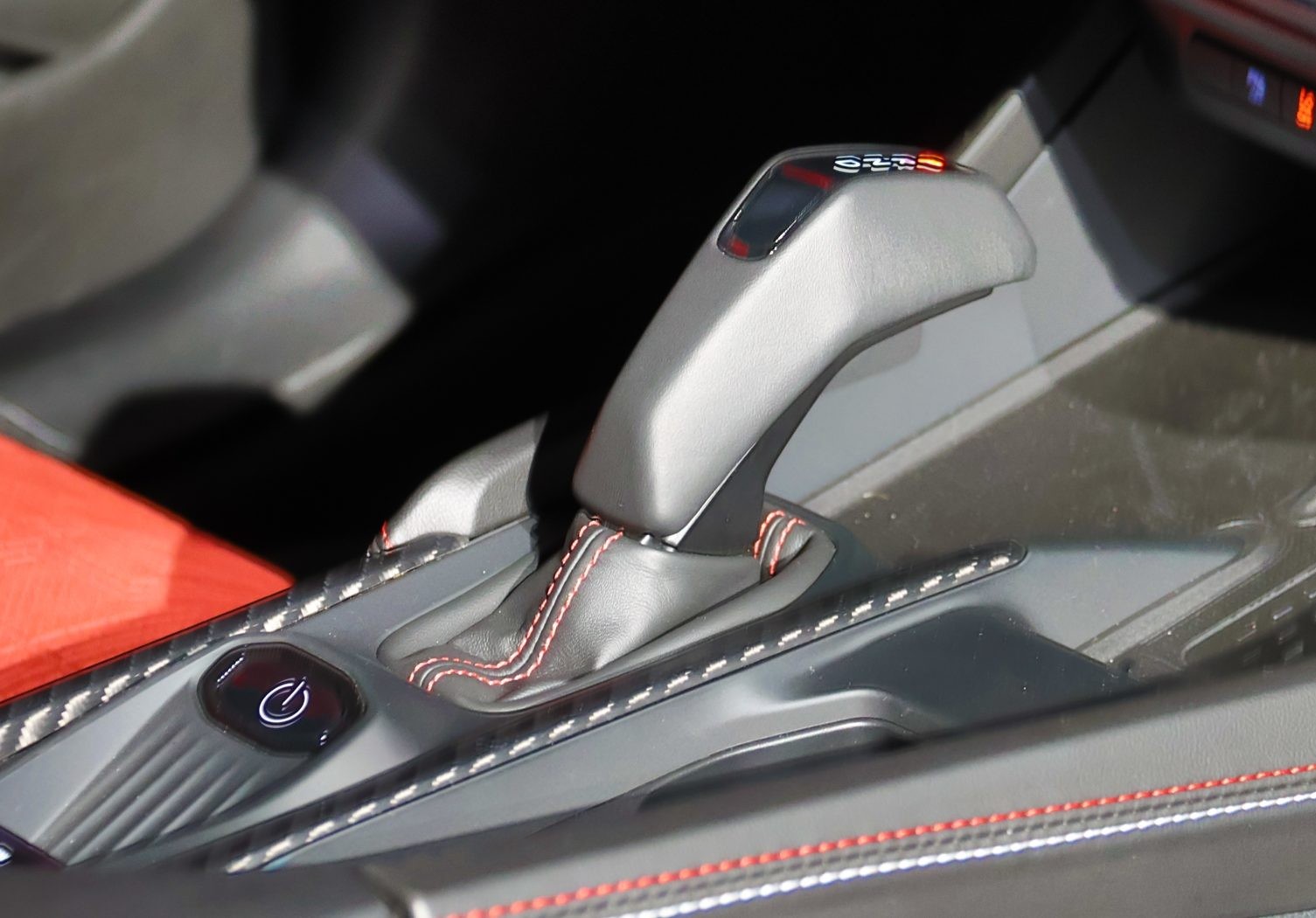 2024 Dodge Charger Daytona First Drive
2024 Dodge Charger Daytona First Drive
The Charger Daytona’s cabin feels significantly more premium than the previous generation, featuring soft-touch materials, contrast stitching, and ambient lighting integrated with door panel moldings. Notably, piano black trim is absent, except for glossy bezels around the displays.
Two front seat options are available. Standard seats are two-piece with adjustable headrests, featuring fabric and leatherette upholstery, with optional full leatherette or Demonic Red leatherette on the R/T. Scat Pack buyers can opt for high-back seats with fixed headrests in suede and leatherette or full Nappa leather combinations.
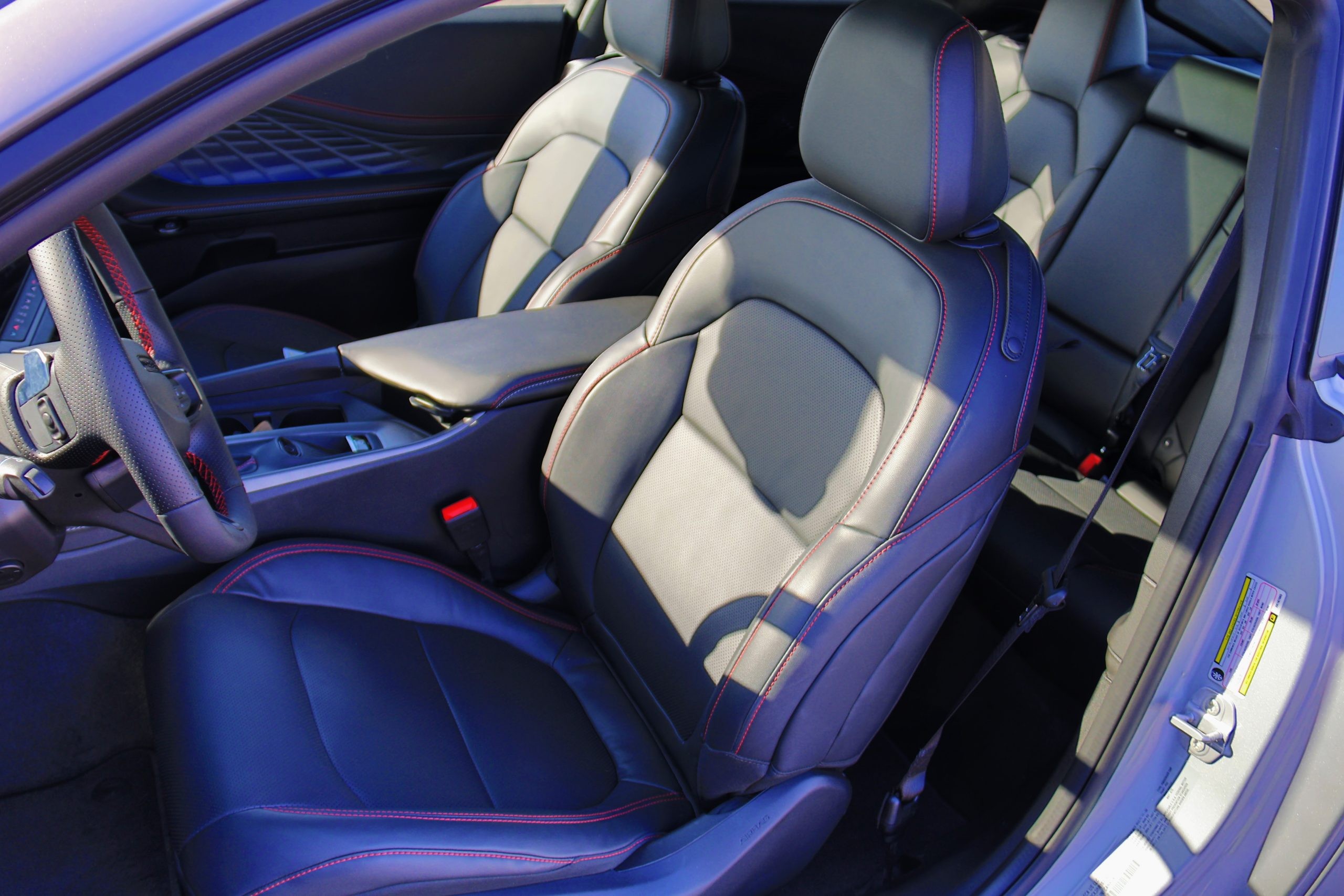 2024 Dodge Charger Daytona First Drive
2024 Dodge Charger Daytona First Drive
Standard front seats in the 2024 Dodge Charger Daytona EV.
Both seat types proved comfortable and supportive during on-road and track driving. A potentially surprising aspect is the seating position. Due to the under-floor battery pack, the floor is slightly higher, resulting in a hip point closer to modern crossovers, though not as tall as a Jeep Wrangler or as low as a Viper or Mustang.
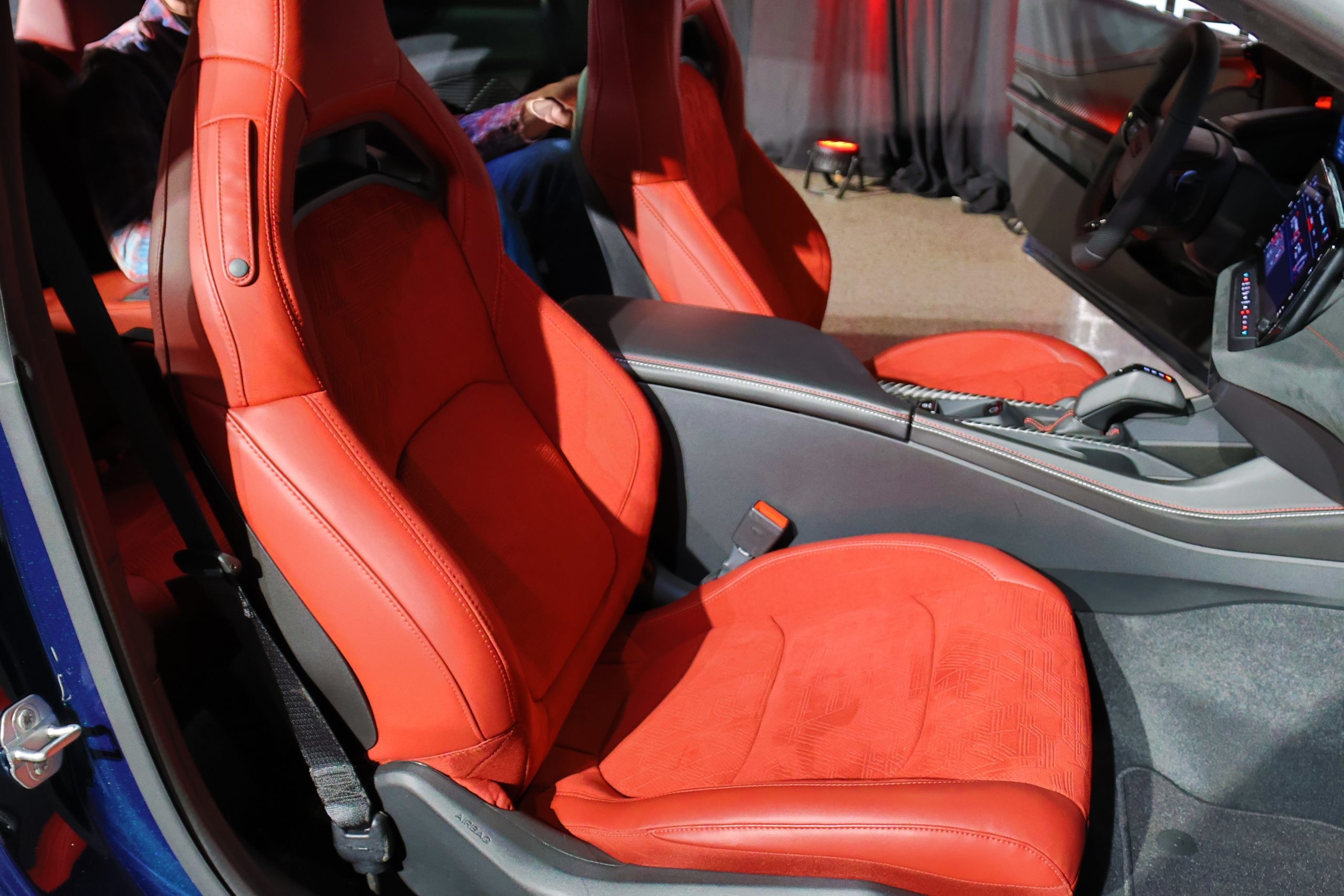 2024 Dodge Charger Daytona First Drive
2024 Dodge Charger Daytona First Drive
Optional high-back front seats in the 2024 Dodge Charger Daytona EV.
The increased size, compared to both the old Charger and especially the Challenger, significantly benefits rear seat space. Front seats power forward, and long doors provide surprisingly easy access to the rear. Even with front seats positioned for taller occupants, rear passengers enjoy ample knee and headroom. Two couples could comfortably undertake a weekend trip in the Charger Daytona, with sufficient luggage space.
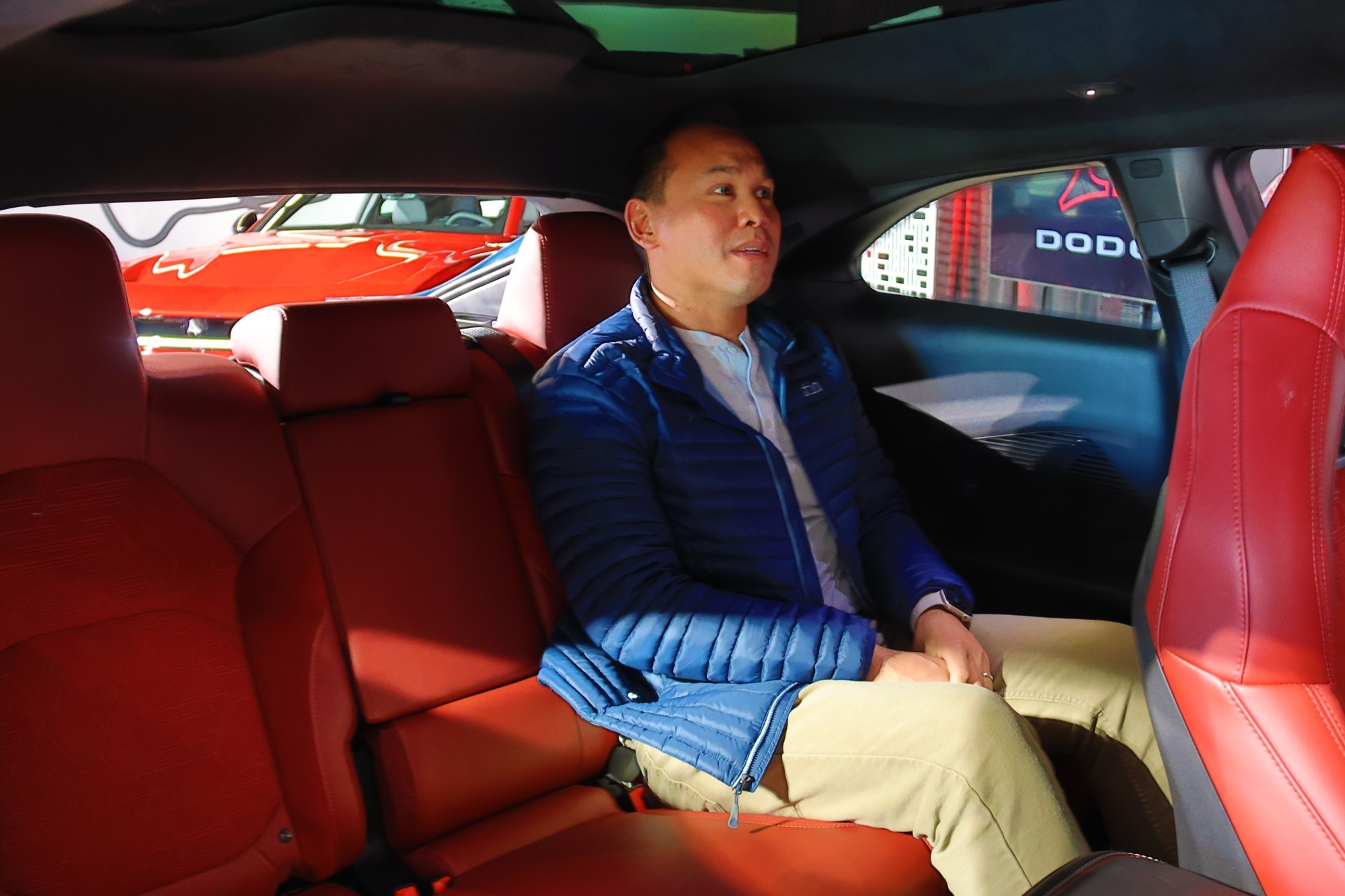 2024 Dodge Charger Daytona First Drive
2024 Dodge Charger Daytona First Drive
Rear seat spaciousness in the 2024 Dodge Charger Daytona EV.
The steering wheel features a flattened top and bottom, but avoids extreme yoke designs. It’s generously sized with a thick, comfortable rim, easy to maneuver on winding roads. The larger 16-inch instrument display is thoughtfully designed, ensuring all critical information remains visible above the steering wheel rim.
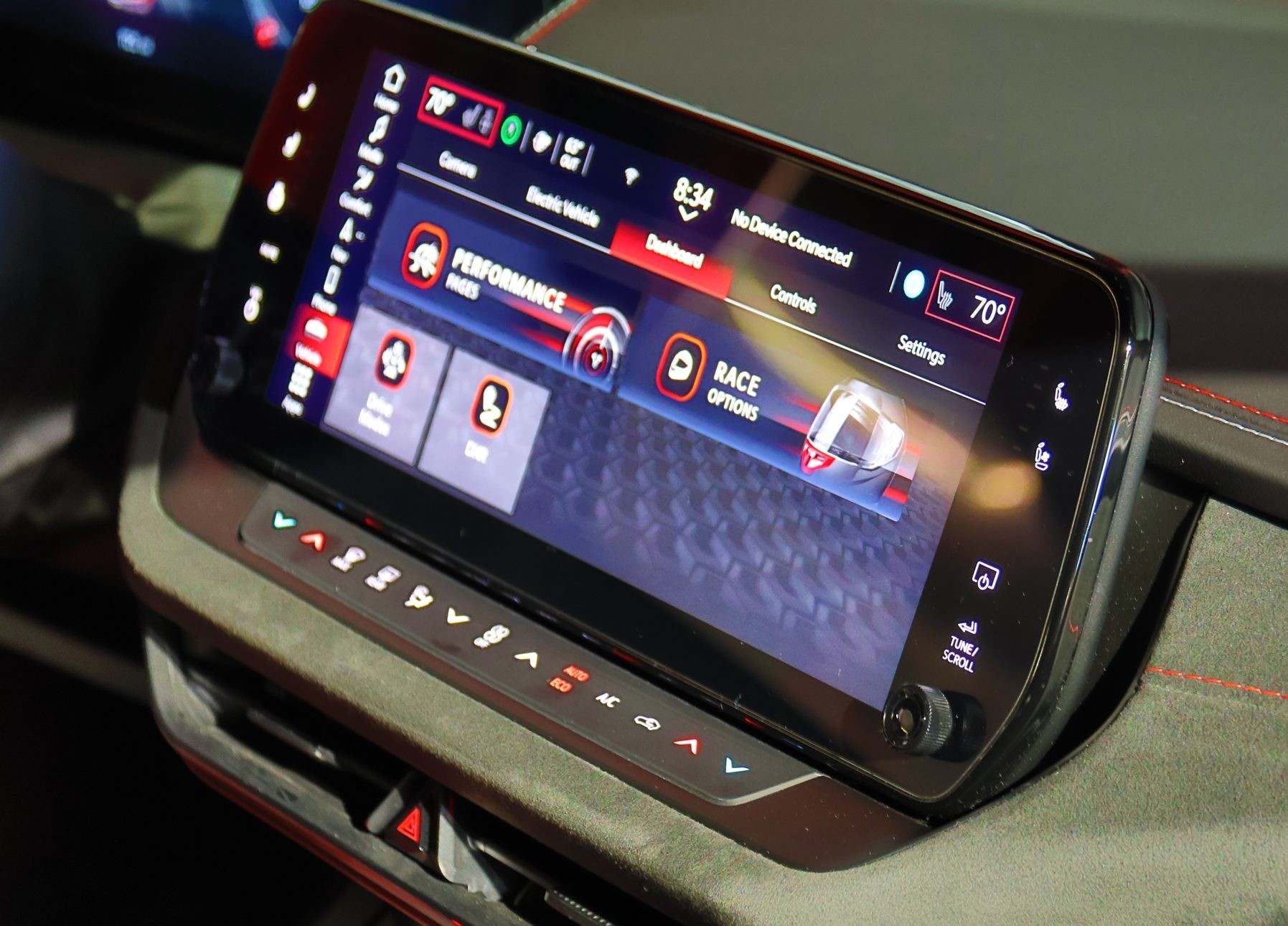 2024 Dodge Charger Daytona First Drive
2024 Dodge Charger Daytona First Drive
A minor drawback is the strip of touch-sensitive climate controls beneath the center screen. Similar to recent Ford models, these controls are on a single piece of plastic that feels somewhat cheap, contrasting with the otherwise premium interior. While not a deal-breaker, it’s a noticeable element.
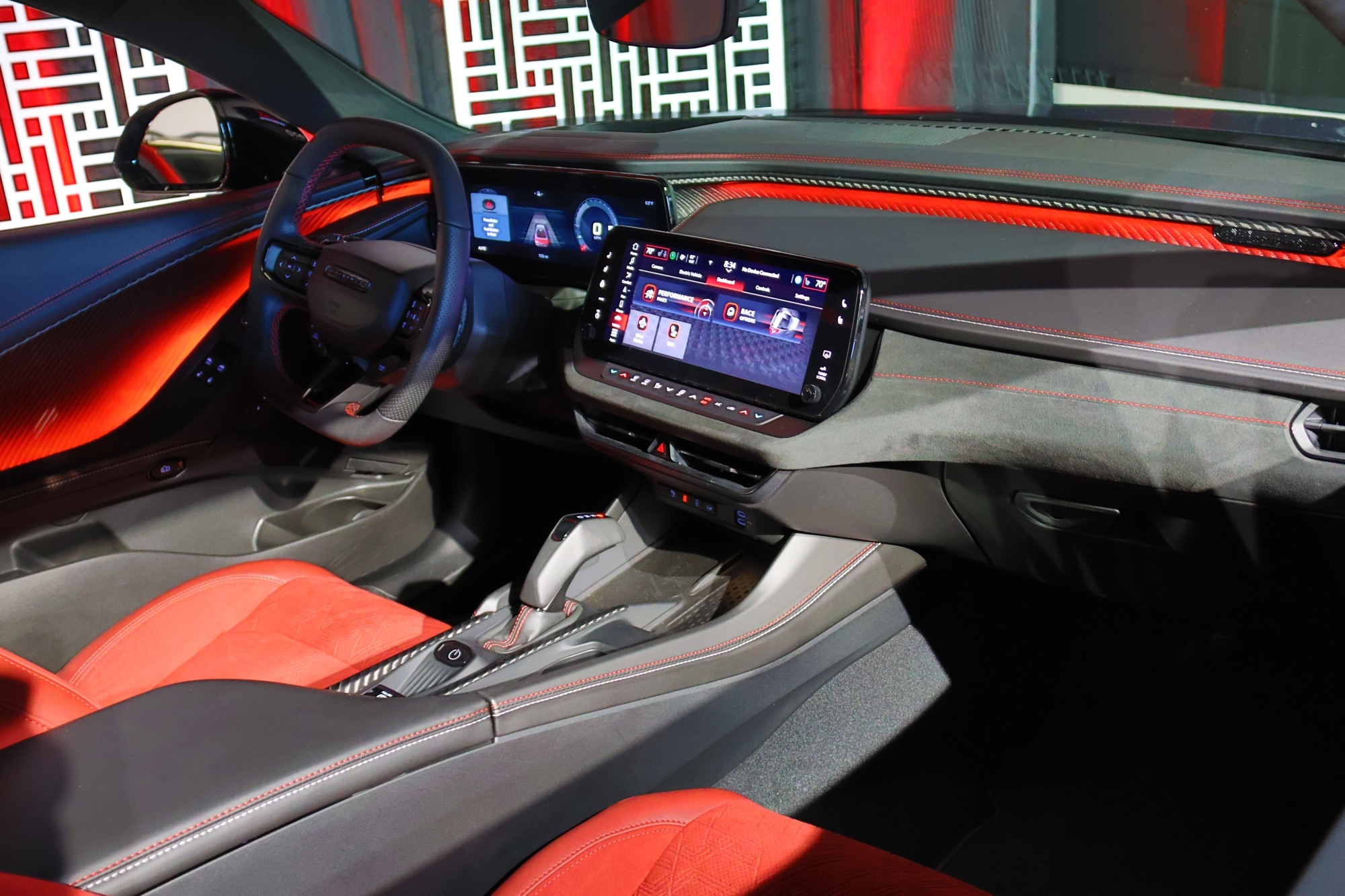 2024 Dodge Charger Daytona First Drive
2024 Dodge Charger Daytona First Drive
Conquering the Mountain Roads: Charger EV Driving Dynamics
The Charger Daytona drive program was based at the Radford Racing School in Chandler, Arizona, formerly known as the Bob Bondurant School of High-Performance Driving. Following presentations from Dodge executives, it was time to assess if this electric muscle car truly lived up to the Hellcat legacy.
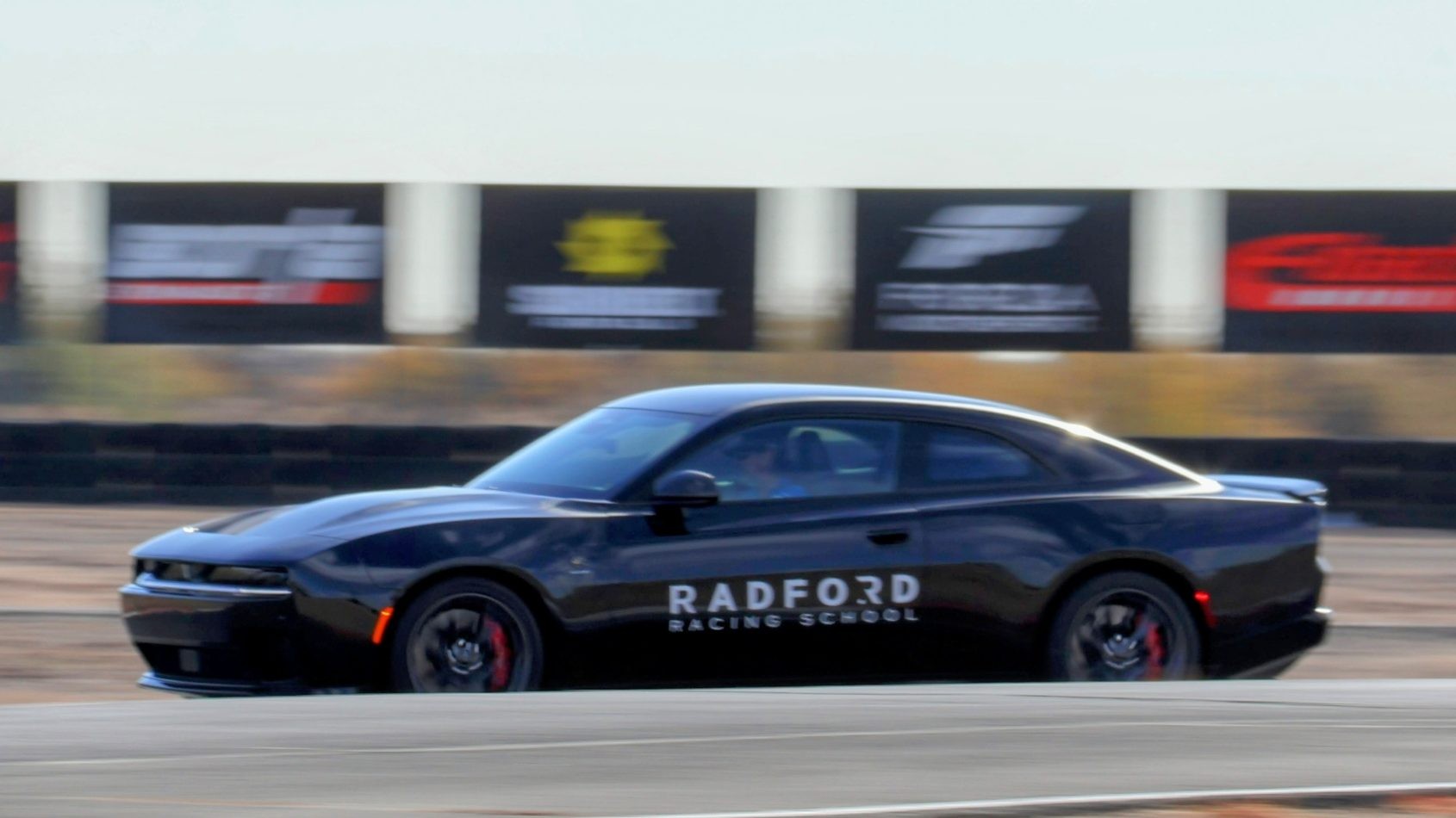 Img 8409~2
Img 8409~2
It’s crucial to acknowledge that some V8 purists will never accept electric powertrains, regardless of performance metrics. However, these individuals represent a minority of previous Charger and Challenger buyers. V6 models were the sales volume leaders, while Hellcats garnered attention but weren’t the mainstream choice.
The road drive commenced in a Scat Pack with the Track package. All 2024 Charger Daytonas utilize identical 250-kW electric drive modules (EDMs) on both axles. Each EDM comprises a permanent magnet motor, reduction gear set, and integrated power electronics.
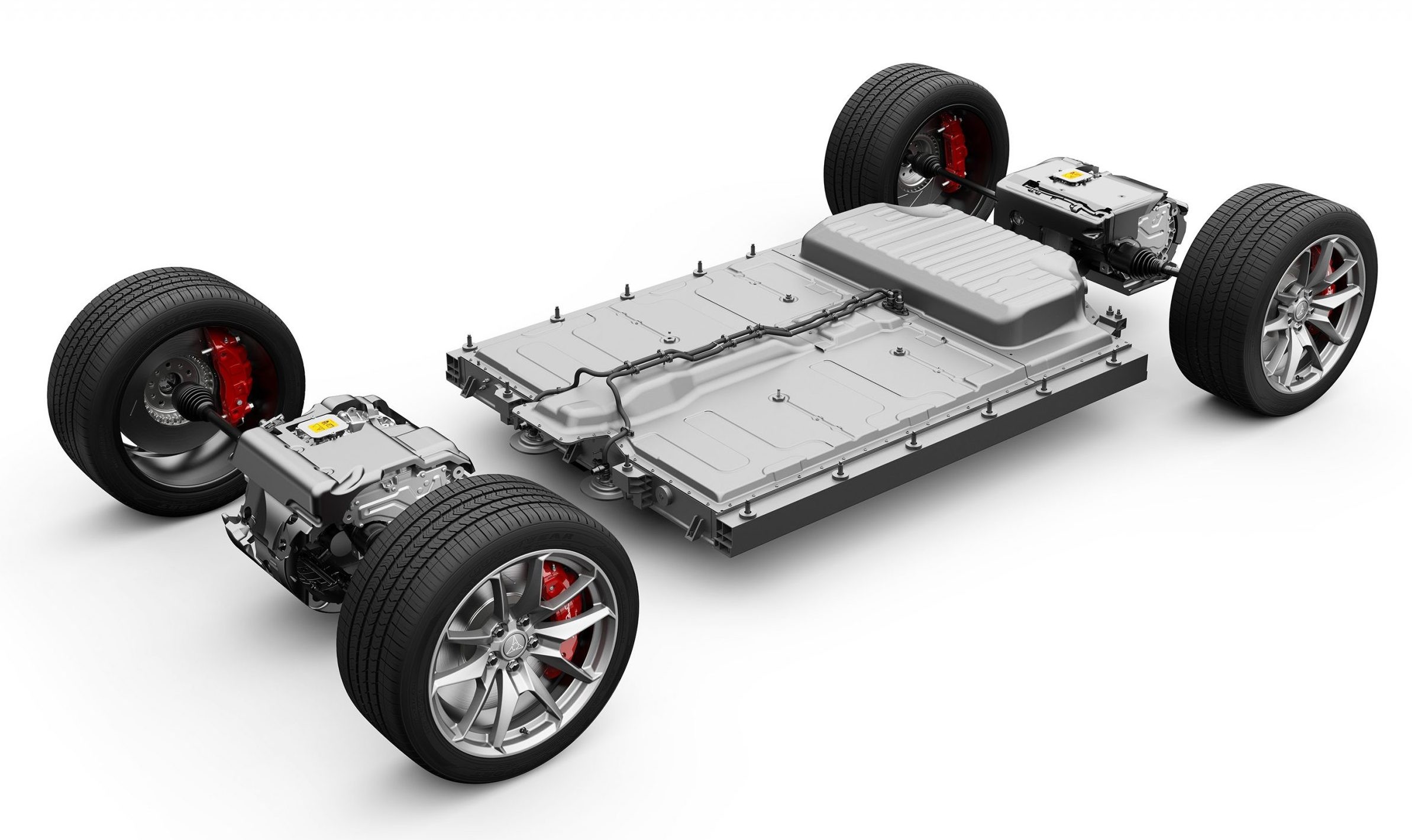 All Electric, All Wheel Drive Dodge Charger Daytona Models Are D
All Electric, All Wheel Drive Dodge Charger Daytona Models Are D
All Charger Daytona EV models feature all-wheel-drive and a 400V electric powertrain for instant torque and V8-level power.
In the R/T trim, these EDMs deliver 456 hp and 404 lb-ft of torque, with a “Power Shot” button adding 40 hp for up to 10 seconds. The Scat Pack boasts a Direct Connection Stage 2 tune (with other tunes planned), producing 630 hp and 627 lb-ft, also with the 40-hp Power Shot. The front EDM includes a clutch to decouple it during cruising, enhancing efficiency, a feature relevant for maximizing range and optimizing charger ev performance.
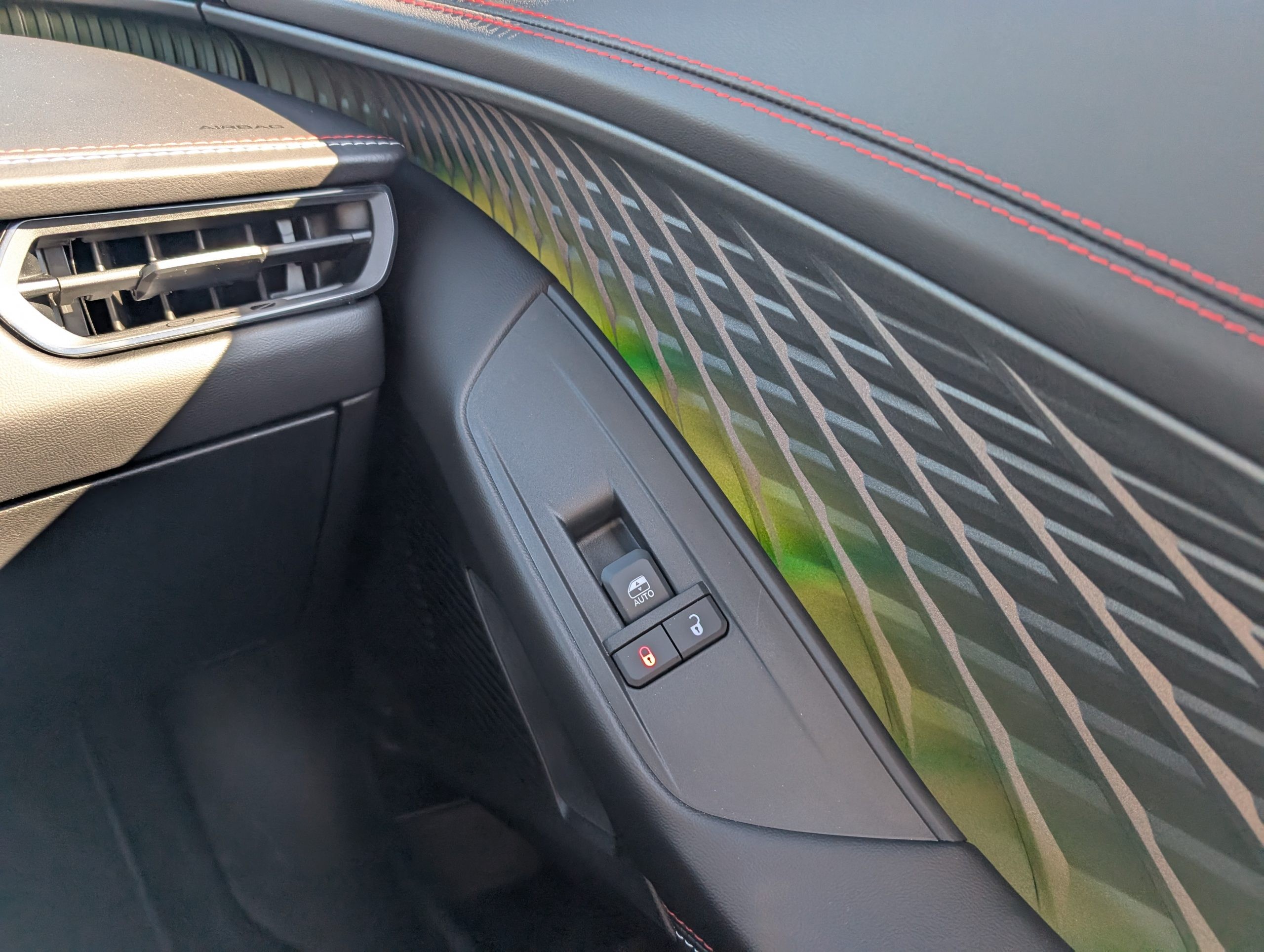 Pxl 20241205 173528377
Pxl 20241205 173528377
A 100.5-kWh lithium-ion battery pack, containing Samsung SDI nickel-manganese-cobalt cells, sits between the EDMs. The R/T achieves an EPA-estimated 308 miles of range, while the Scat Pack, with added weight and stickier tires, is rated at 241 miles. Current Charger Daytonas use a 400V architecture, with the high-performance Banshee variant upgrading to 800V. With pre-conditioning, the battery can charge at up to 220-kW from a 350-kW DC fast charger, achieving a 20-80% charge in approximately 24 minutes. AC charging at up to 11-kW is also supported, taking about 6.8 hours for a 5-80% charge – typical figures for modern charger ev systems.
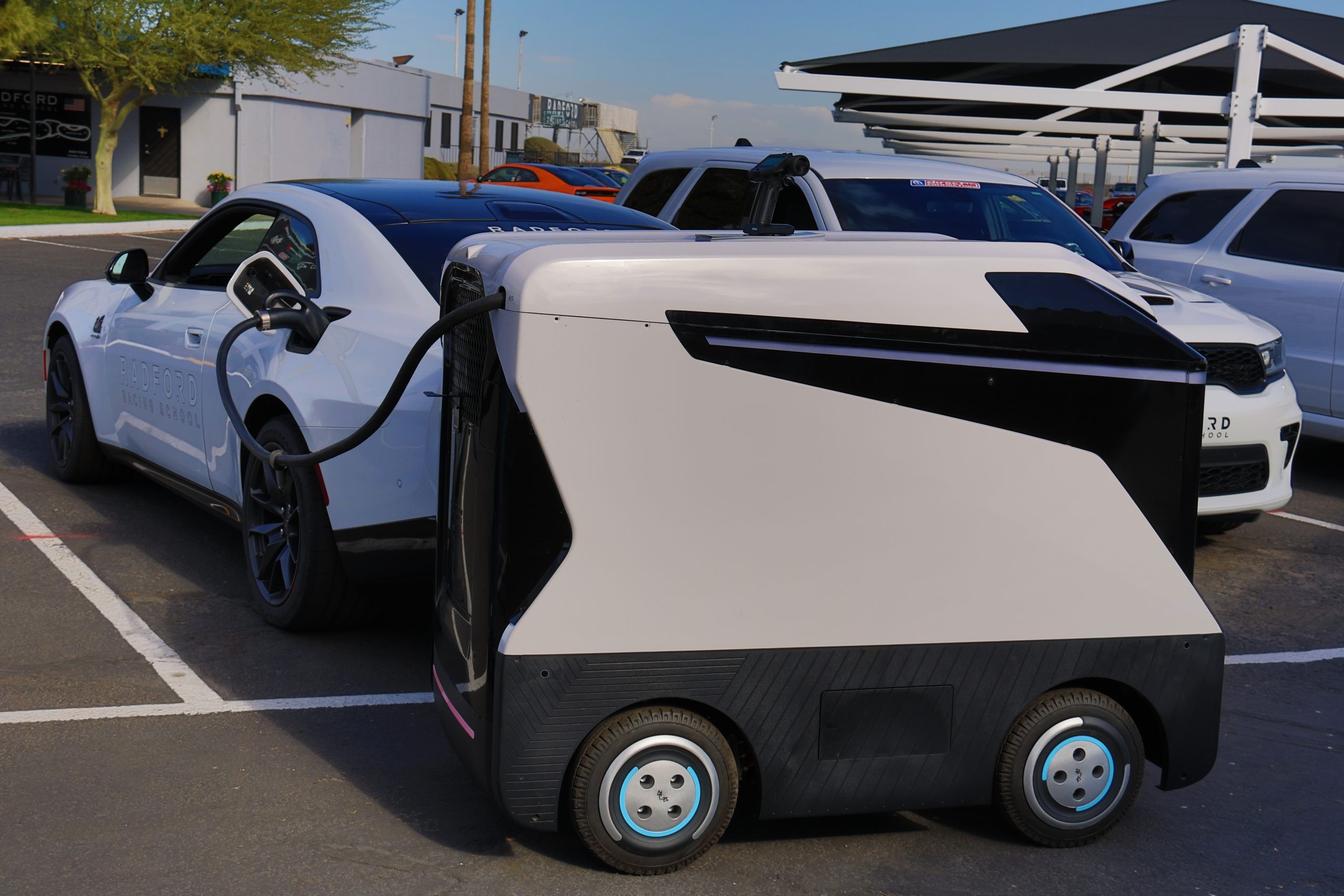 2024 Dodge Charger Daytona First Drive
2024 Dodge Charger Daytona First Drive
A 2024 Dodge Charger Daytona EV receives a charge from a mobile DC charger, showcasing the charging infrastructure for EVs.
Charging wasn’t tested during the drive event, and Radford School is planning to install DC fast chargers to support their new electric Charger fleet. Dodge utilized mobile charging units from Ion Dynamics, each containing a 104-kWh battery and capable of 60-kW charging, replenished via standard 240V outlets.
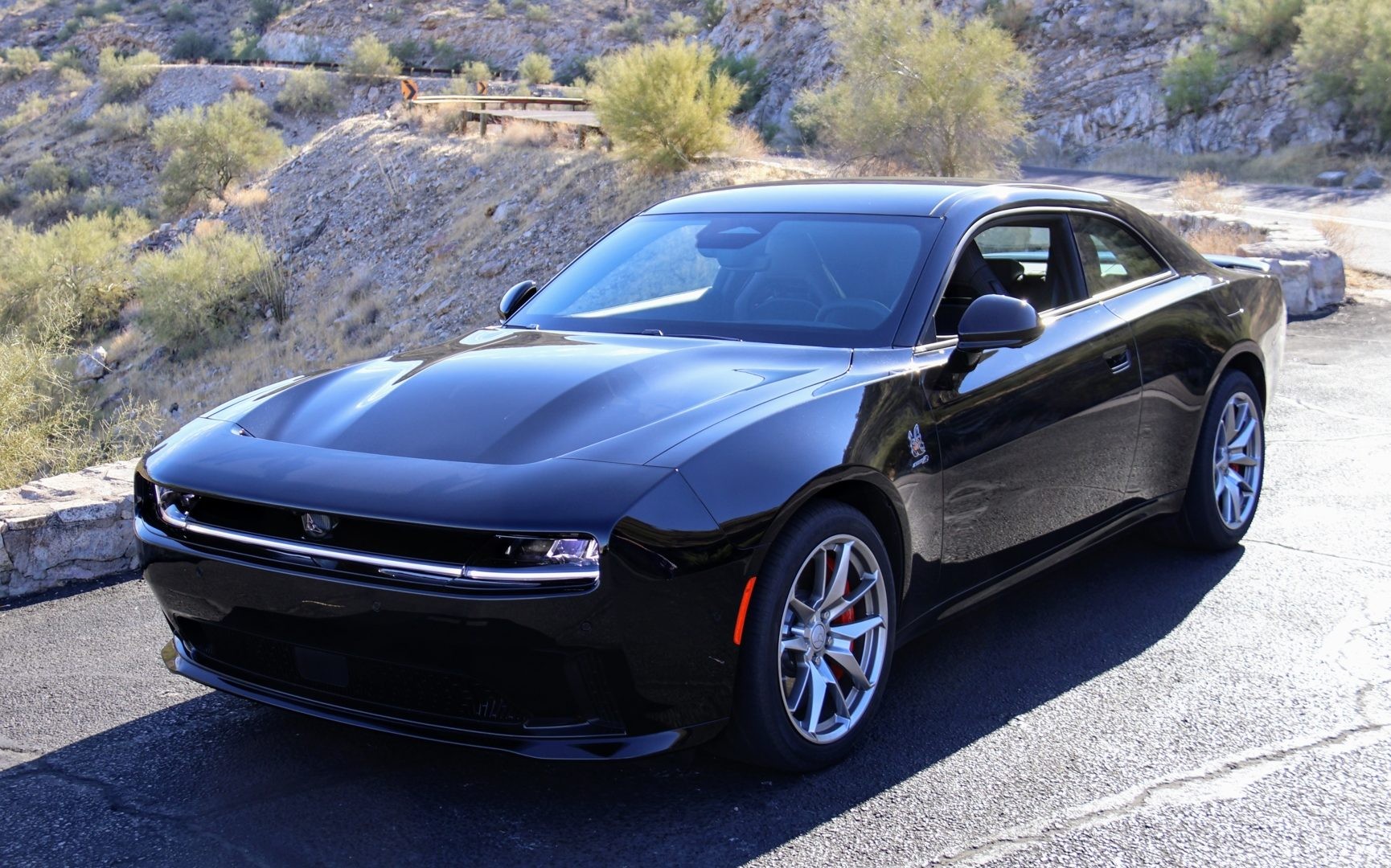 2024 Dodge Charger Daytona First Drive
2024 Dodge Charger Daytona First Drive
Pressing the start button activates the Fratzonic exhaust, producing a turbine-like spooling sound followed by a roar, indicating the car is “running.” Unlike the Hyundai Ioniq 5N, the Fratzonic sound is unique to the Charger Daytona, not emulating a traditional engine, but clearly conveying performance intent.
At “idle,” the sound settles into a pulsing rumble. Crucially, it can be deactivated for quiet operation. Track, drag, and drift modes amplify the sound. Aftermarket sound palettes are also anticipated.
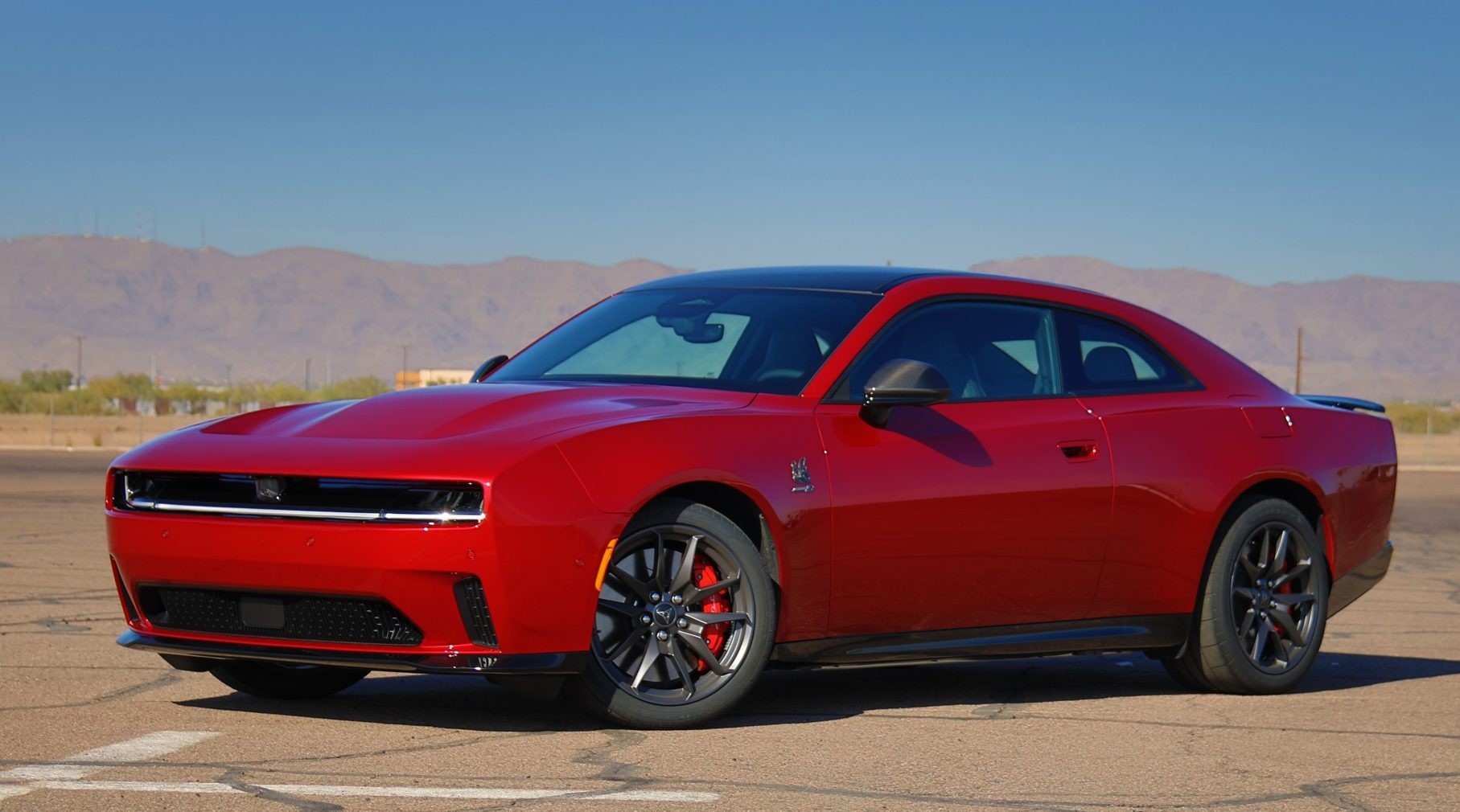 2024 Dodge Charger Daytona First Drive
2024 Dodge Charger Daytona First Drive
Driving in “Auto” mode, on a mix of highways and surface streets towards South Mountain Park, the Charger Daytona demonstrated its refined ride. It features multi-link front and integral link rear suspension. R/T models have conventional monotube dampers, while the Scat Pack uses dual-valve adaptive dampers. Base R/T models ride on 245/55ZR18 all-season tires, with 255/45ZR20 tires available with option packages.
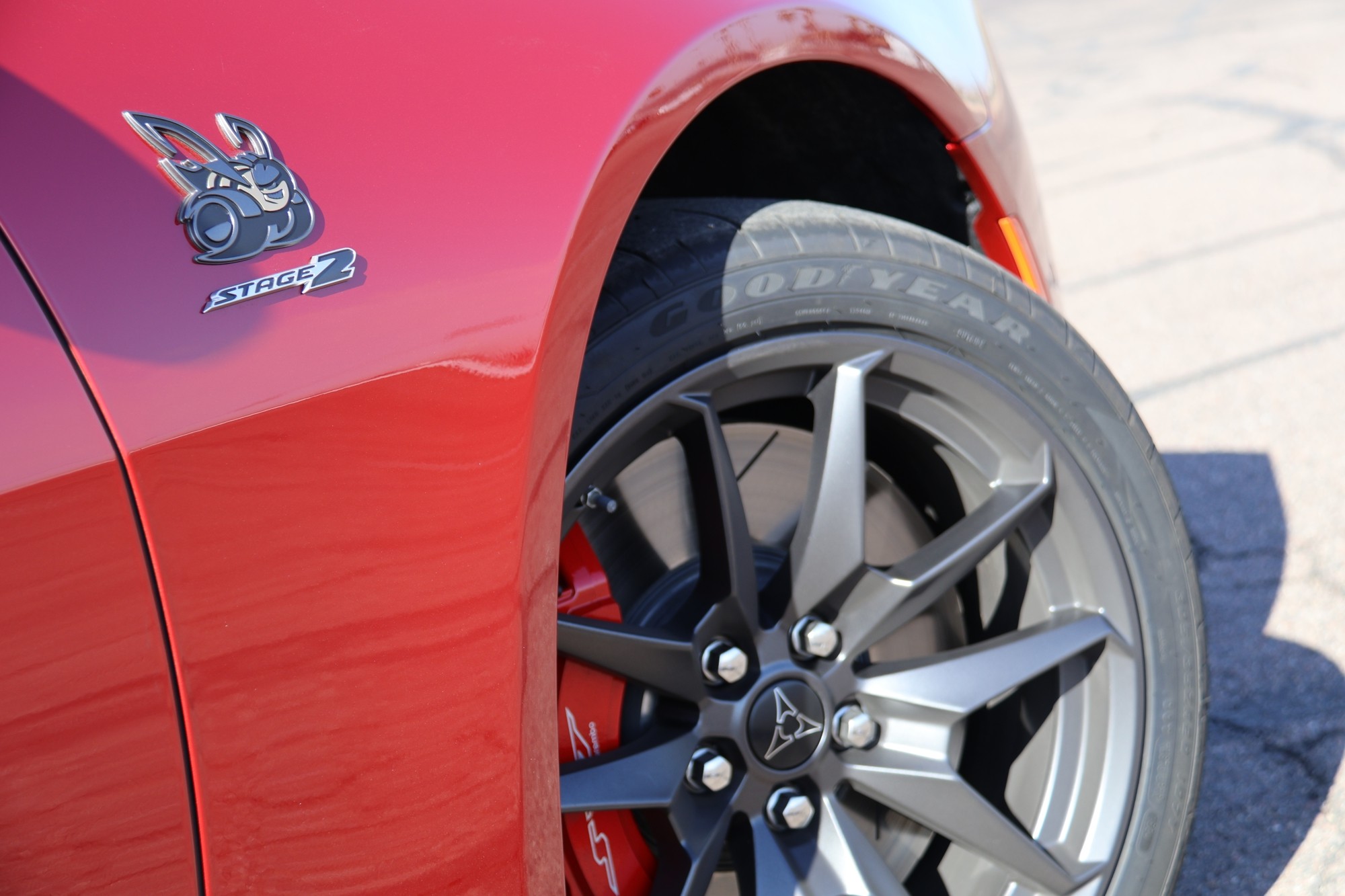 2024 Dodge Charger Daytona First Drive
2024 Dodge Charger Daytona First Drive
The Scat Pack, with its increased power and torque, starts with 305/35ZR20 all-season tires at all corners. The Track Pack upgrades rear tires to 325/35ZR20 all-seasons, with optional Goodyear Eagle F1 Supercar 3 summer tires in the same size. Road driving was conducted on all-season tires, while summer tires were used on the track and drift pad. The wider, stickier tires contribute to the Scat Pack’s reduced range.
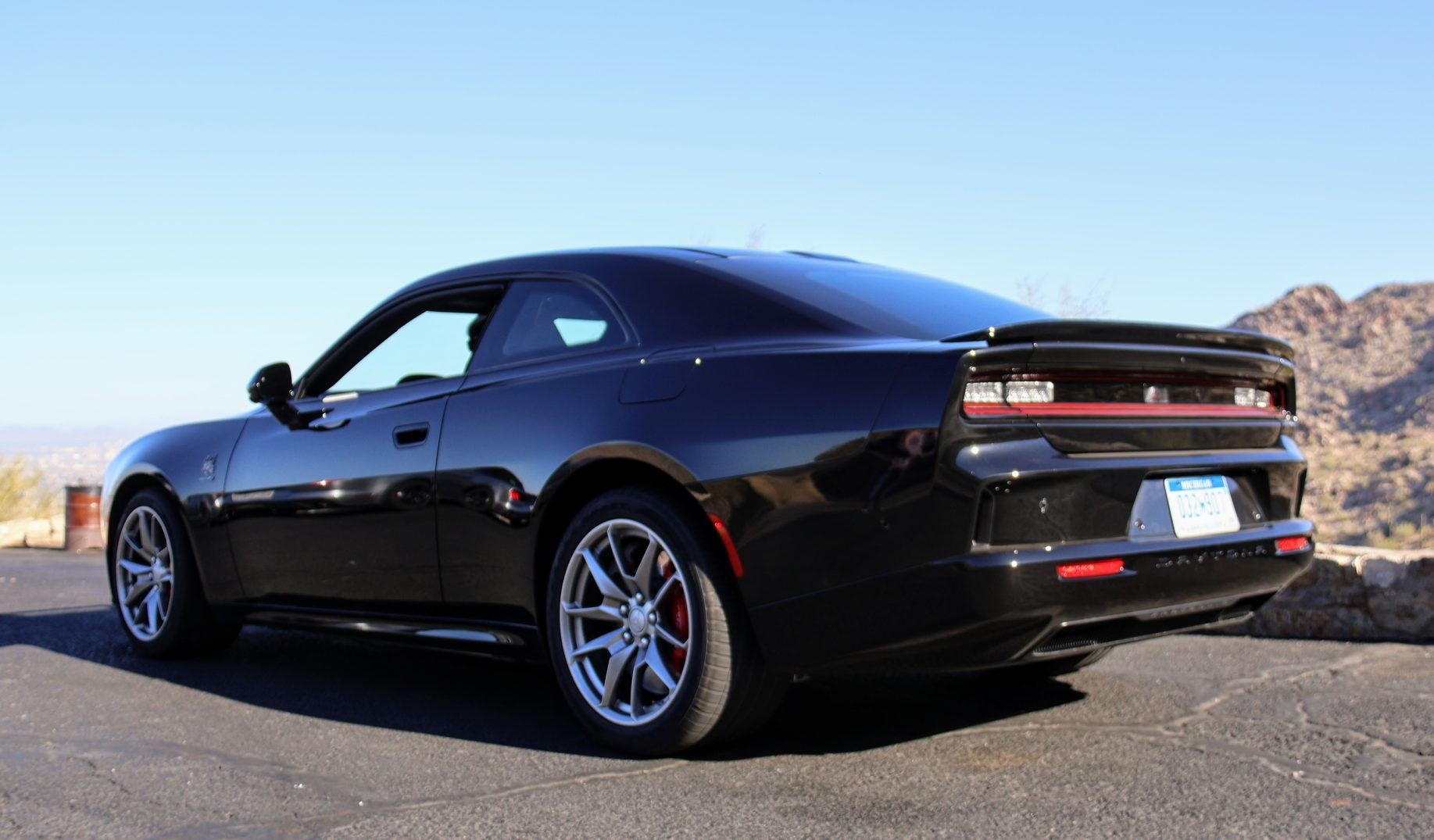 2024 Dodge Charger Daytona First Drive
2024 Dodge Charger Daytona First Drive
Phoenix roads, while generally smooth, have imperfections like expansion joints. The Scat Pack’s ride quality was surprisingly good, even on less-than-perfect South Mountain roads, without harshness or excessive impact, likely due to the adaptive dampers. The R/T, with conventional dampers, also offered good ride quality, though expansion joints were slightly more noticeable. Michigan road testing will provide further insights into ride comfort across different road conditions.
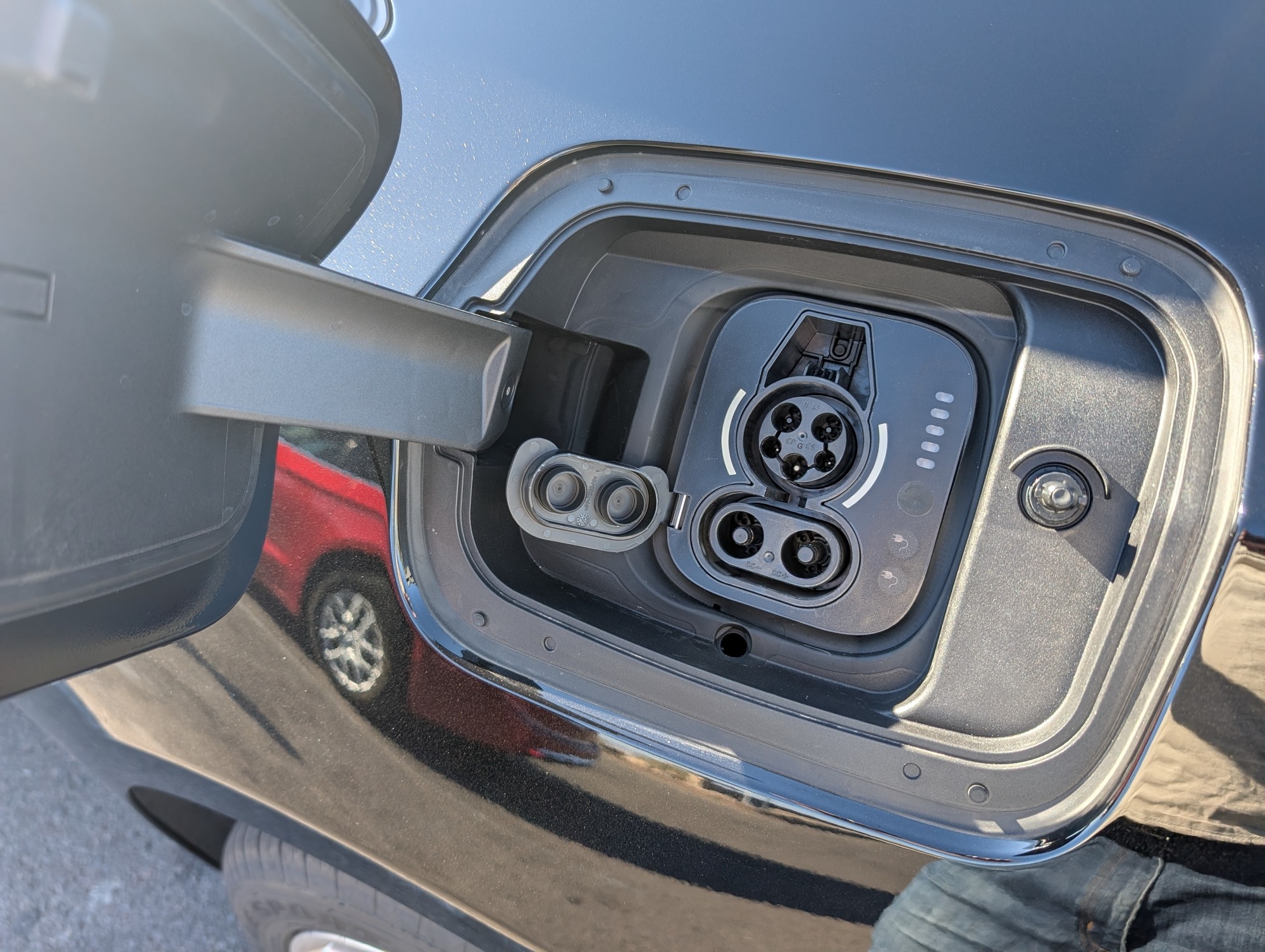 Pxl 20241205 171154827
Pxl 20241205 171154827
Ascending the twisty South Mountain road, the Charger Daytona, weighing nearly 5,700 lbs in Scat Pack form, belies its weight. While 1,200 lbs heavier than a Hellcat Charger, the battery pack’s low placement and even front-rear weight distribution (50/50 vs. 57/43 for the V8) contribute to a surprisingly nimble feel.
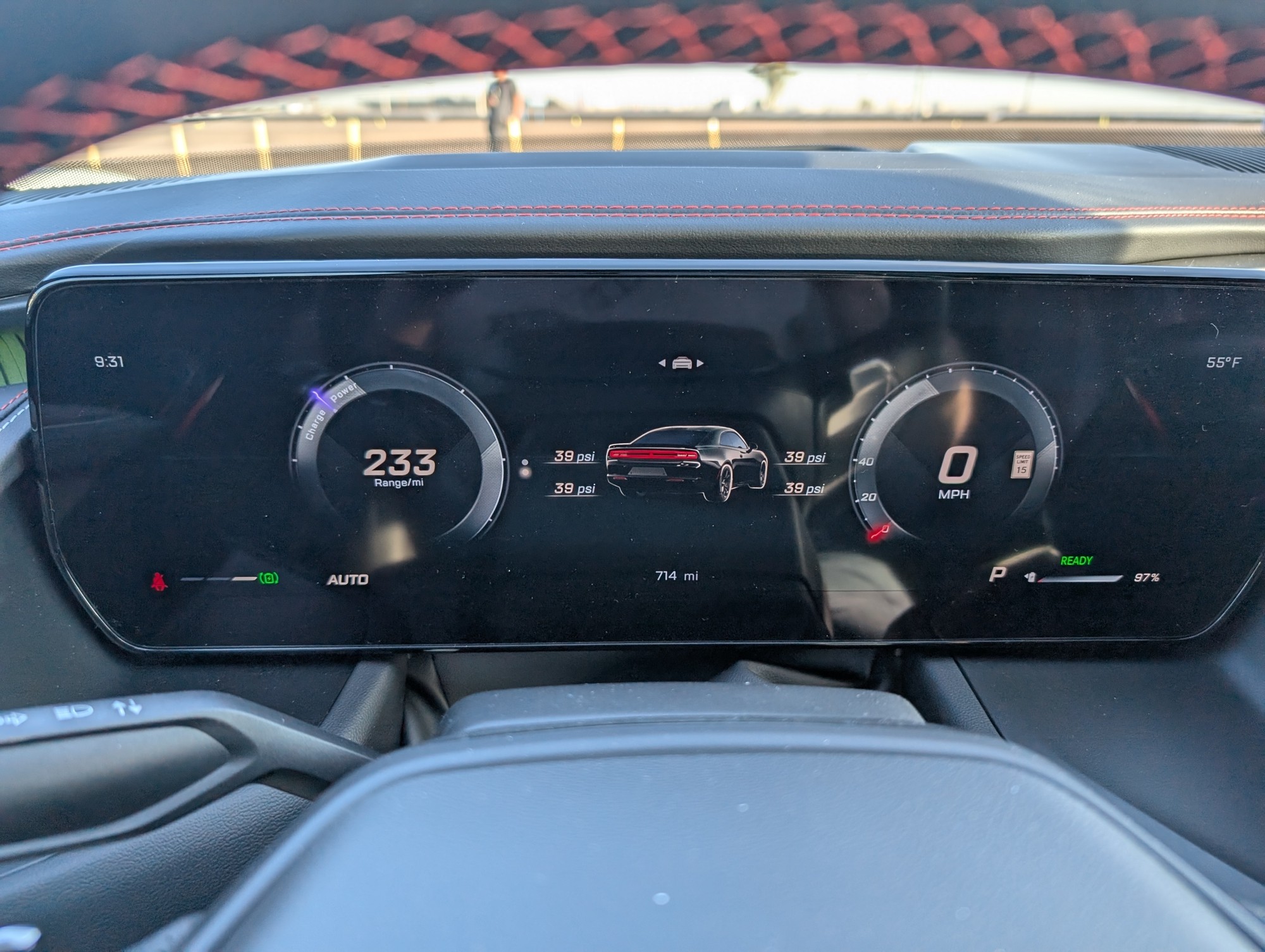 Pxl 20241205 163109653
Pxl 20241205 163109653
Combined with all-wheel drive, the Charger Daytona feels much lighter and more agile than expected on winding roads. However, steering feel and width were minor drawbacks.
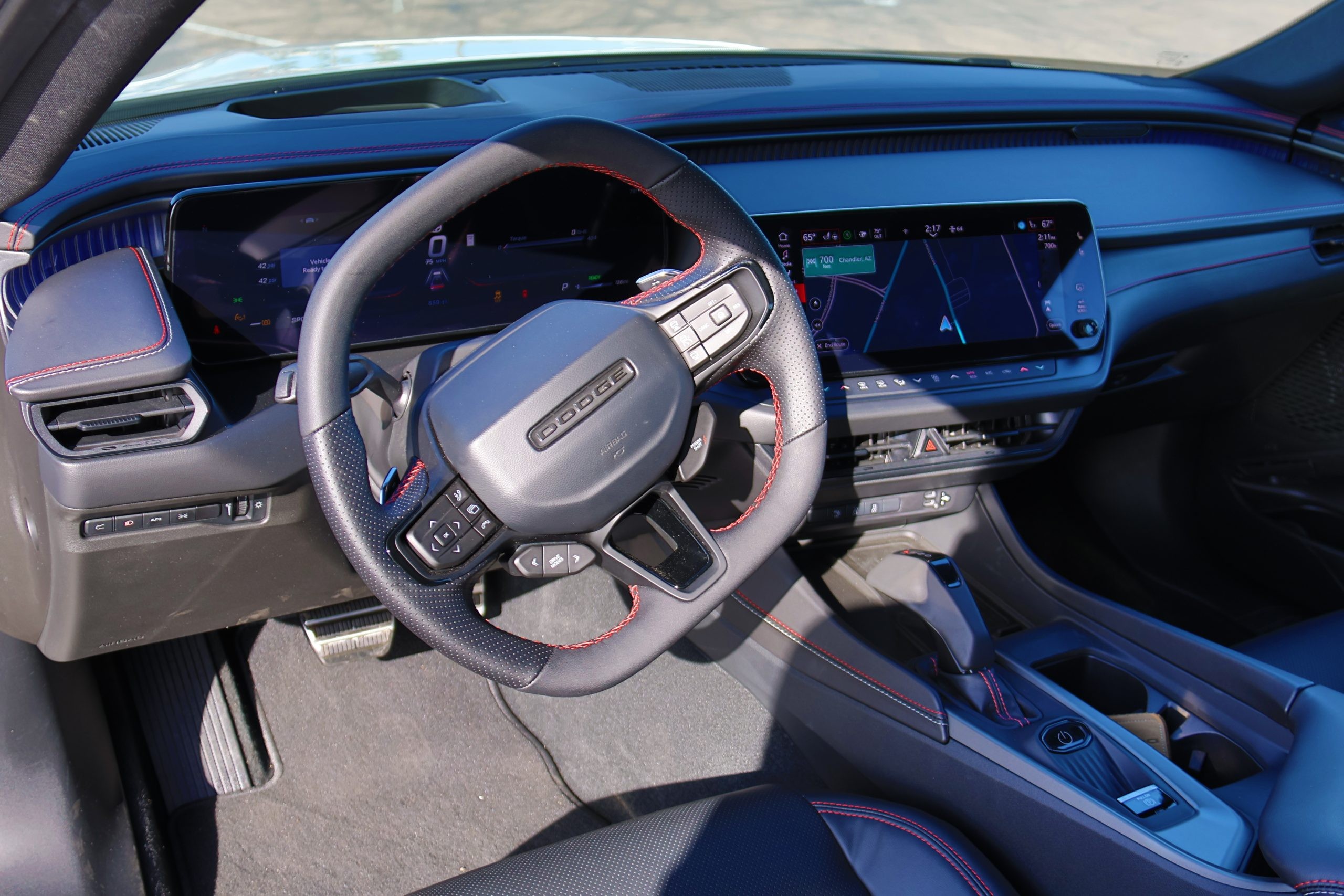 2024 Dodge Charger Daytona First Drive
2024 Dodge Charger Daytona First Drive
The variable-ratio steering system, while functional, lacks feedback, even in Sport or Track modes. Effort increases with driving modes, but the connection to the front wheels remains somewhat muted. While perhaps fitting for a muscle car rather than a sports car, it’s slightly disappointing. The Charger’s width also demanded caution on narrow mountain roads, requiring careful lane positioning on blind corners.
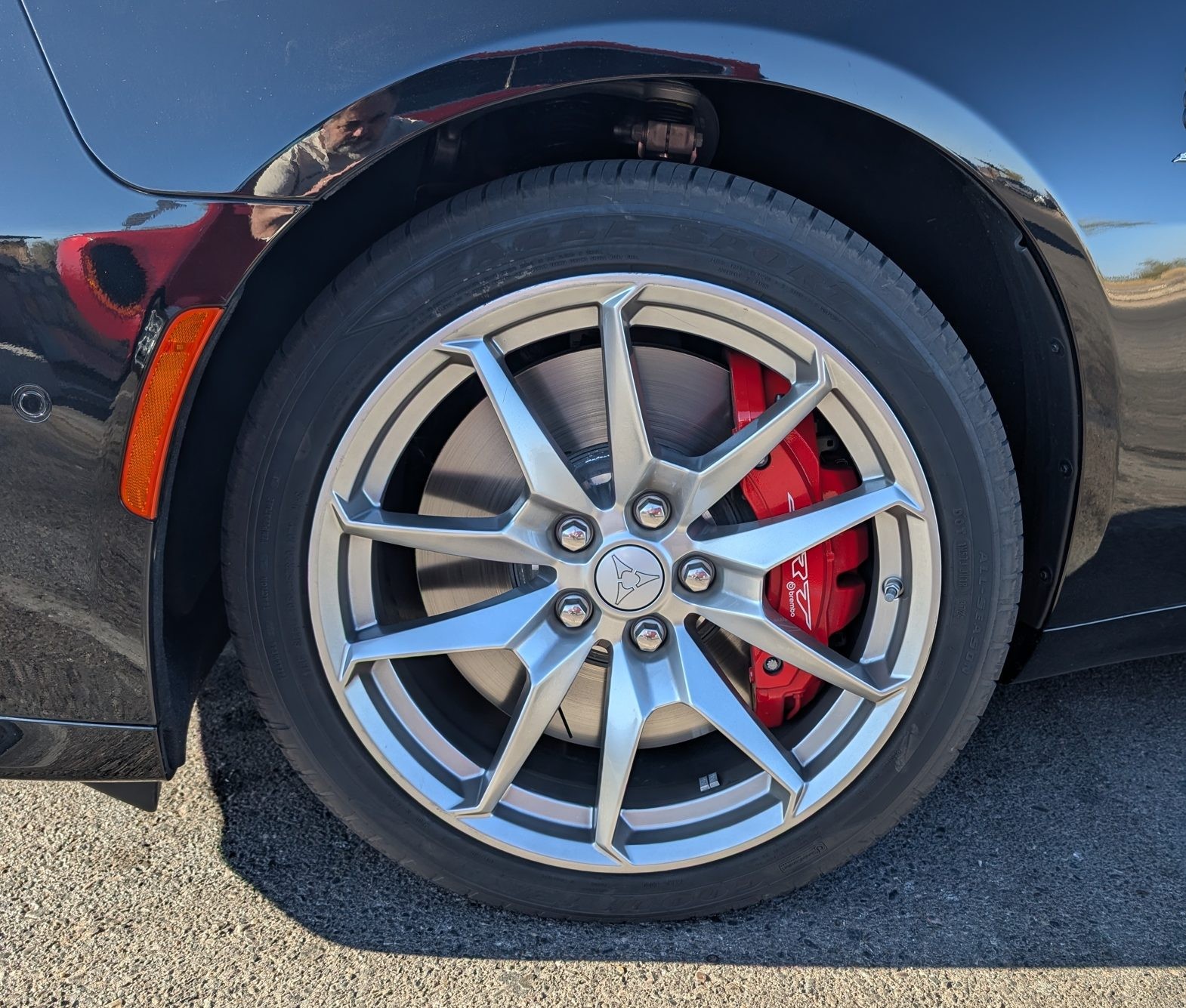 Pxl 20241205 171055062
Pxl 20241205 171055062
Braking is well-managed despite the vehicle’s mass. R/T models have 354-mm front and 350-mm rear rotors. Scat Pack models upgrade to 410-mm rotors at both ends with Brembo six-piston front and four-piston rear calipers. Regenerative braking is also significant, adjustable via steering wheel paddles. While large brakes might seem redundant with regen, they are crucial when the battery is full and cannot absorb regenerative energy, particularly during track driving.
The Uconnect 5 interface allows toggling creep mode and regen settings. “Creep on” with low regen emulates a traditional automatic transmission feel. “Creep off” with maximum regen enables one-pedal driving, though regen isn’t as aggressive as some other EVs.
Throughout the drive, the Fratzonic sound system was explored. While not a V8 emulation, the loudest setting is aggressive and fitting for a muscle car, more so than systems in the Ioniq 5N or Mach-E. Dodge opted against simulated shifting, a feature present in the Hyundai, which, while gimmicky, can be entertaining on back roads. For daily commuting, deactivating these sounds offers a more relaxed experience.
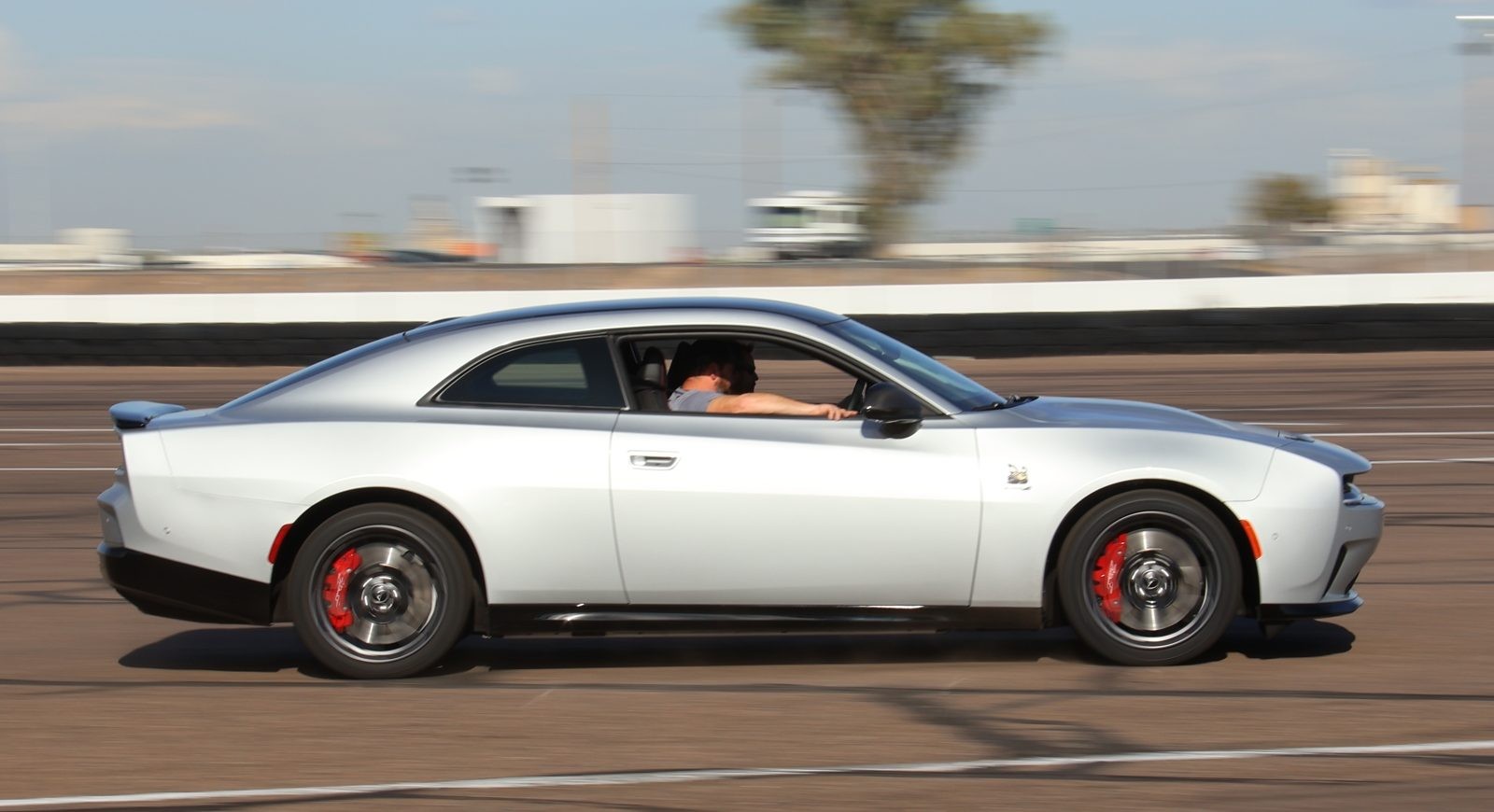 2024 Dodge Charger Daytona First Drive
2024 Dodge Charger Daytona First Drive
Track and Drift Dynamics: Unleashing the Electric Muscle
Track laps at the Radford school road course in Scat Pack models on summer tires revealed the Charger Daytona’s surprising balance. Width was less of an issue on track. “Race Prep” mode in the infotainment system optimizes battery temperature for maximum power output, taking up to 5 minutes.
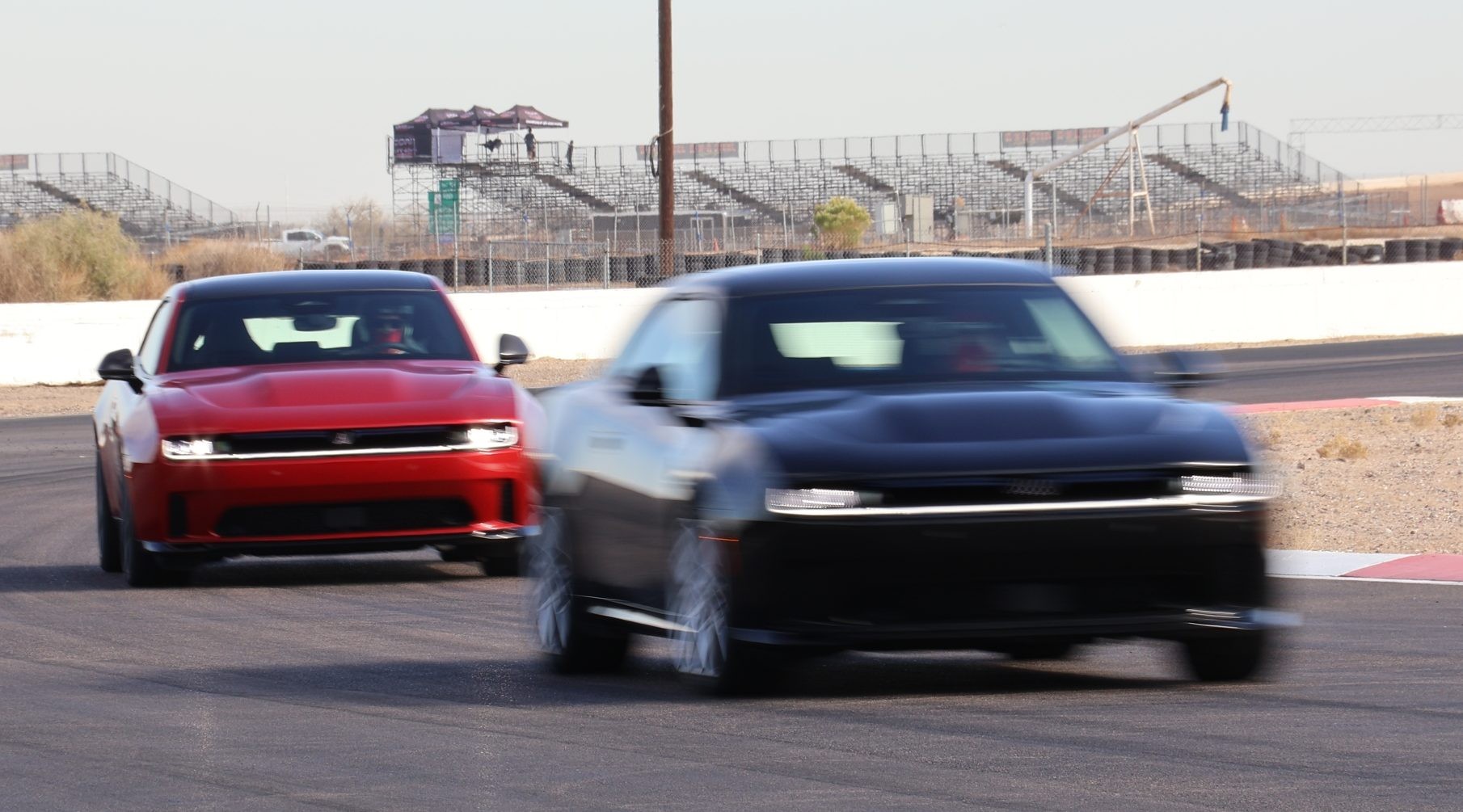 2024 Dodge Charger Daytona First Drive
2024 Dodge Charger Daytona First Drive
The Power Shot button provides a noticeable 40-hp boost on track. The Fratzonic exhaust’s audio feedback aids in gauging performance levels and adds to the driving enjoyment.
Drift mode, tested on the skid pad, decouples the front EDM, making the Charger rear-wheel drive. Instant electric torque makes initiating drifts surprisingly easy, even on Supercar tires. Maintaining drifts requires practice in pedal modulation, but generating tire smoke is effortless.
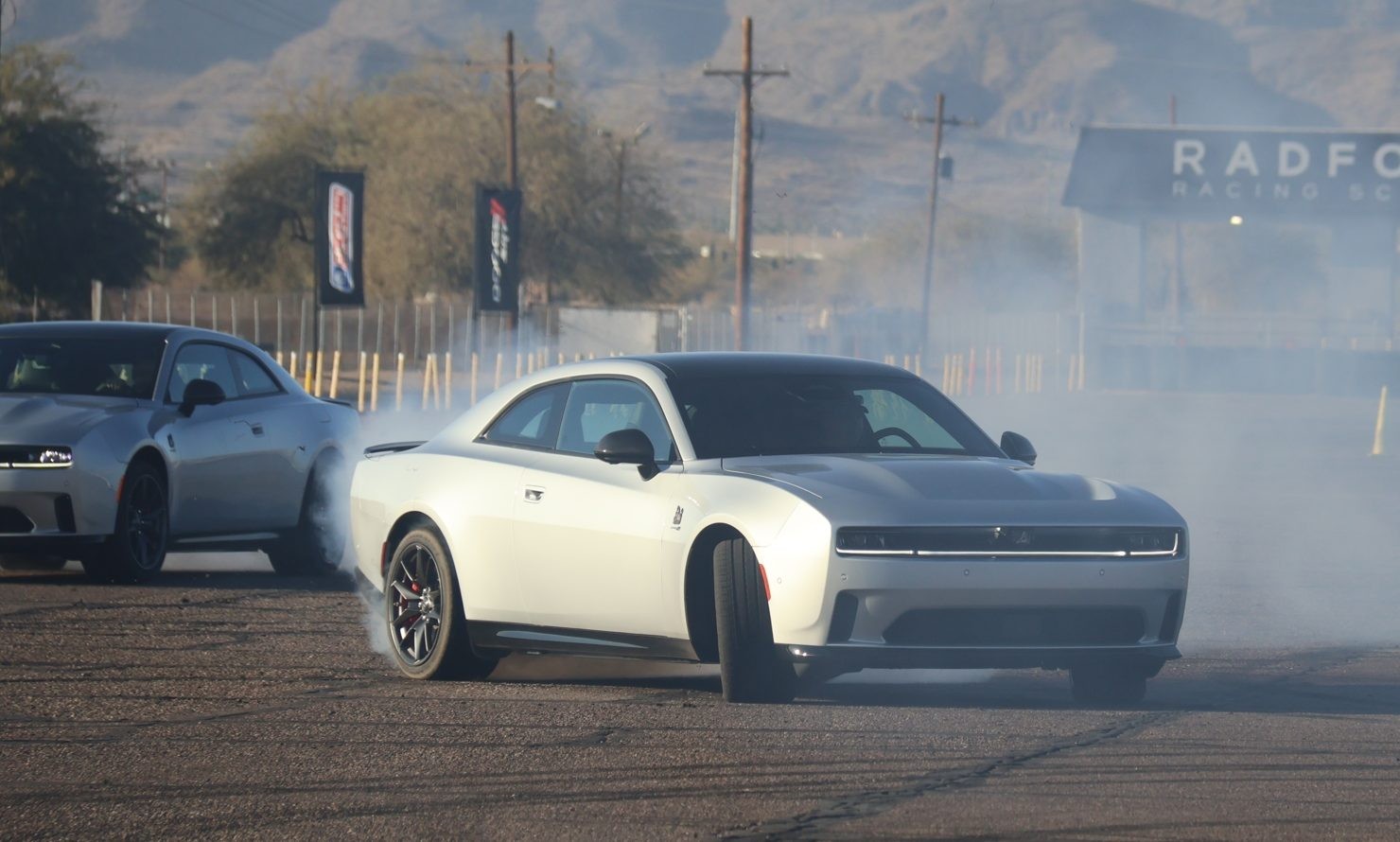 2024 Dodge Charger Daytona First Drive
2024 Dodge Charger Daytona First Drive
Drag strip testing demonstrated the Charger Daytona’s capabilities. Instant torque and all-wheel drive enable consistent launches, surpassing its rear-wheel-drive predecessor. Elapsed times ranged from 11.4 to 11.7 seconds, consistently quicker than a non-Demon Hellcat.
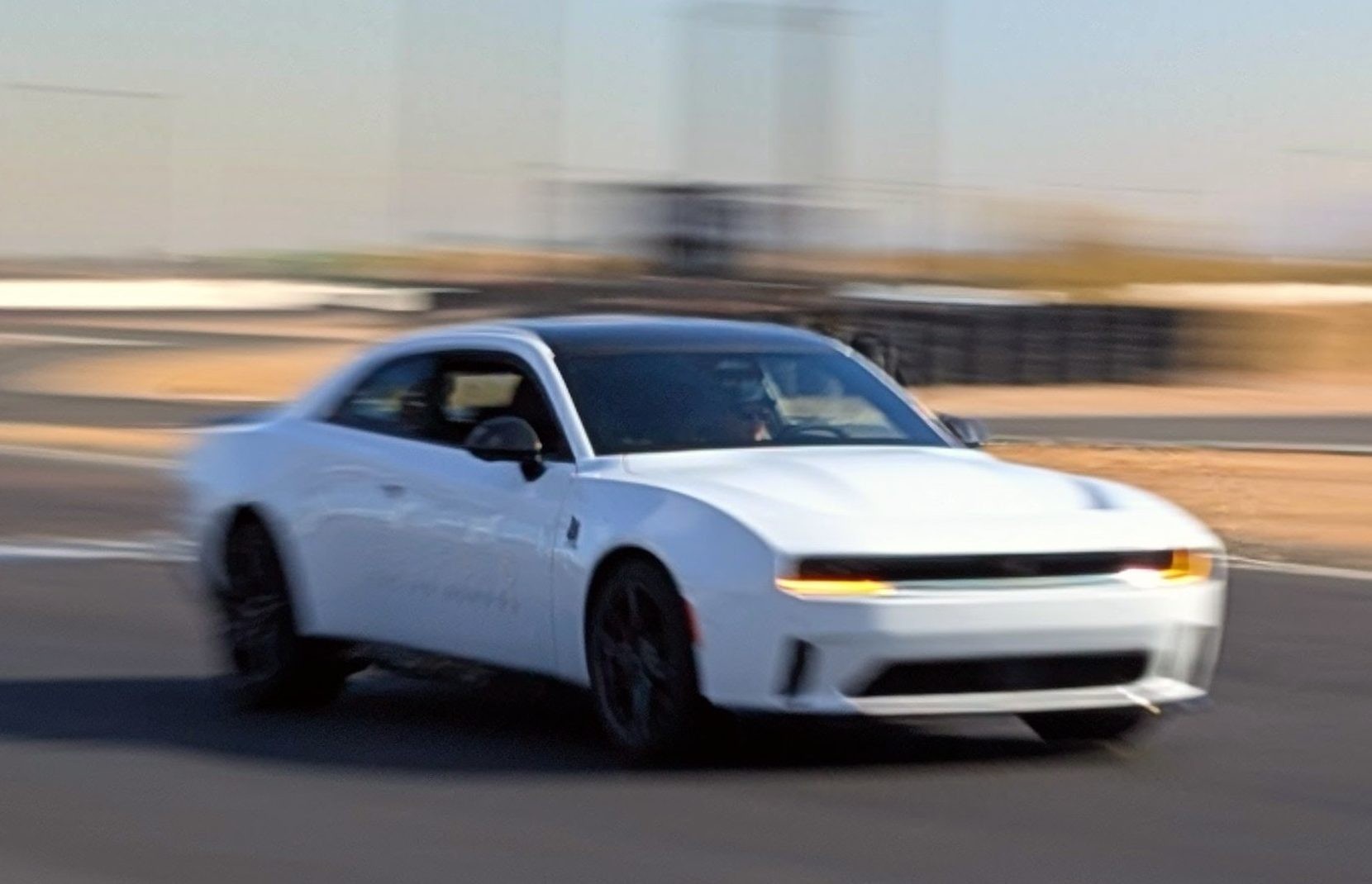 Pxl 20241205 200057938.action Pan 01.cover~2
Pxl 20241205 200057938.action Pan 01.cover~2
Driving the R/T after the Scat Pack highlighted the performance difference. While the R/T, with 456-hp plus Power Shot, is quick (0-60 mph in 4.7 seconds), it lacks the Scat Pack’s brutal acceleration. However, for most previous Charger buyers who opted for V6 models, the R/T will likely be more than satisfactory. The R/T lacks Track, Drift, and Drag modes and uses the same tire size at all corners. Visually, it’s nearly indistinguishable from the Scat Pack.
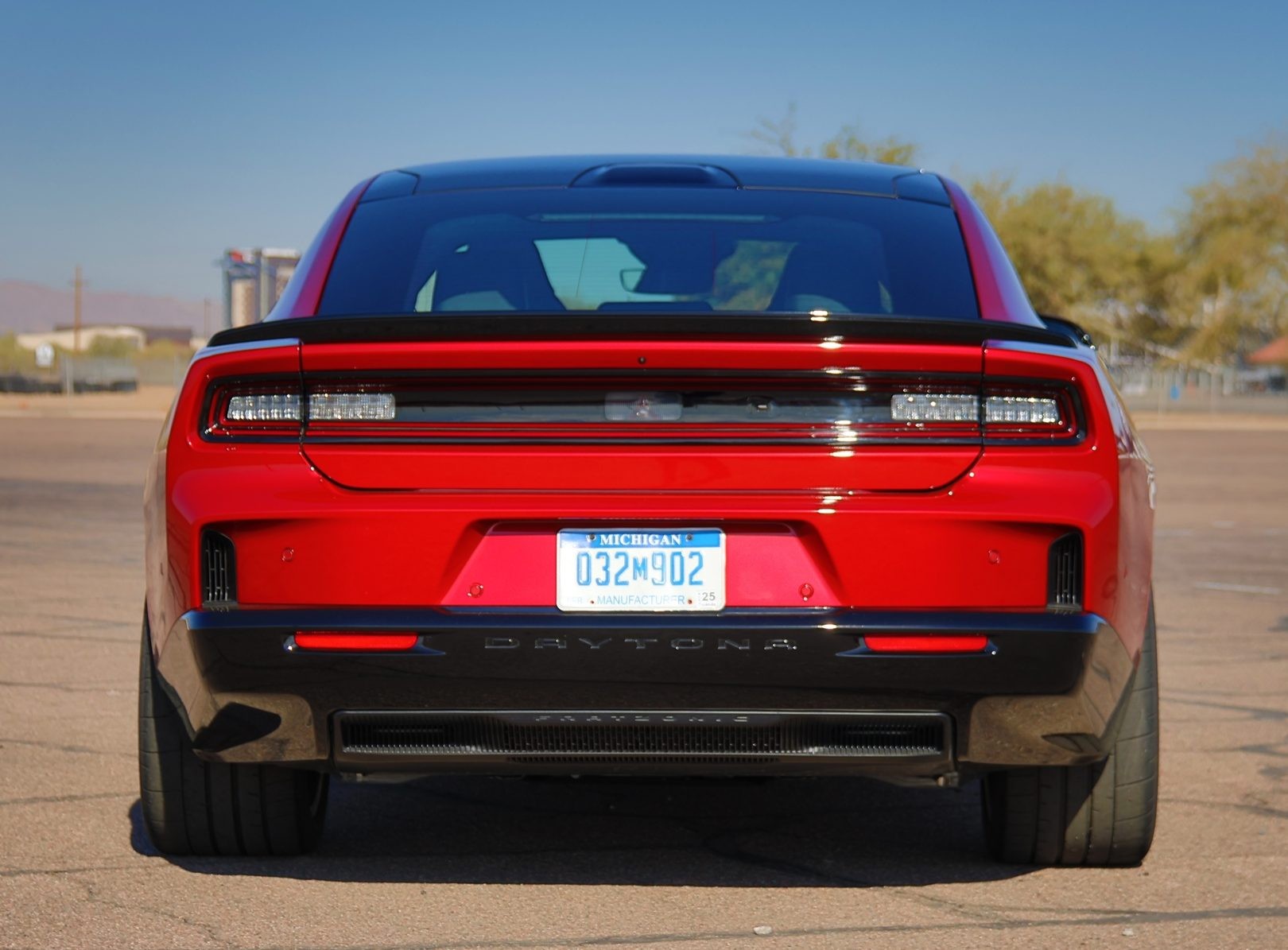 Img 8358~2
Img 8358~2
Defining the Charger Daytona’s competitive set is challenging. Potential rivals include the Hyundai Ioniq 5N, Ford Mach-E GT, and Tesla Model S Plaid. The Plaid, with exceptional acceleration, shares some muscle car characteristics. The Tesla out-accelerates the Charger, but the Dodge boasts a sleeker design than the Hyundai or Ford.
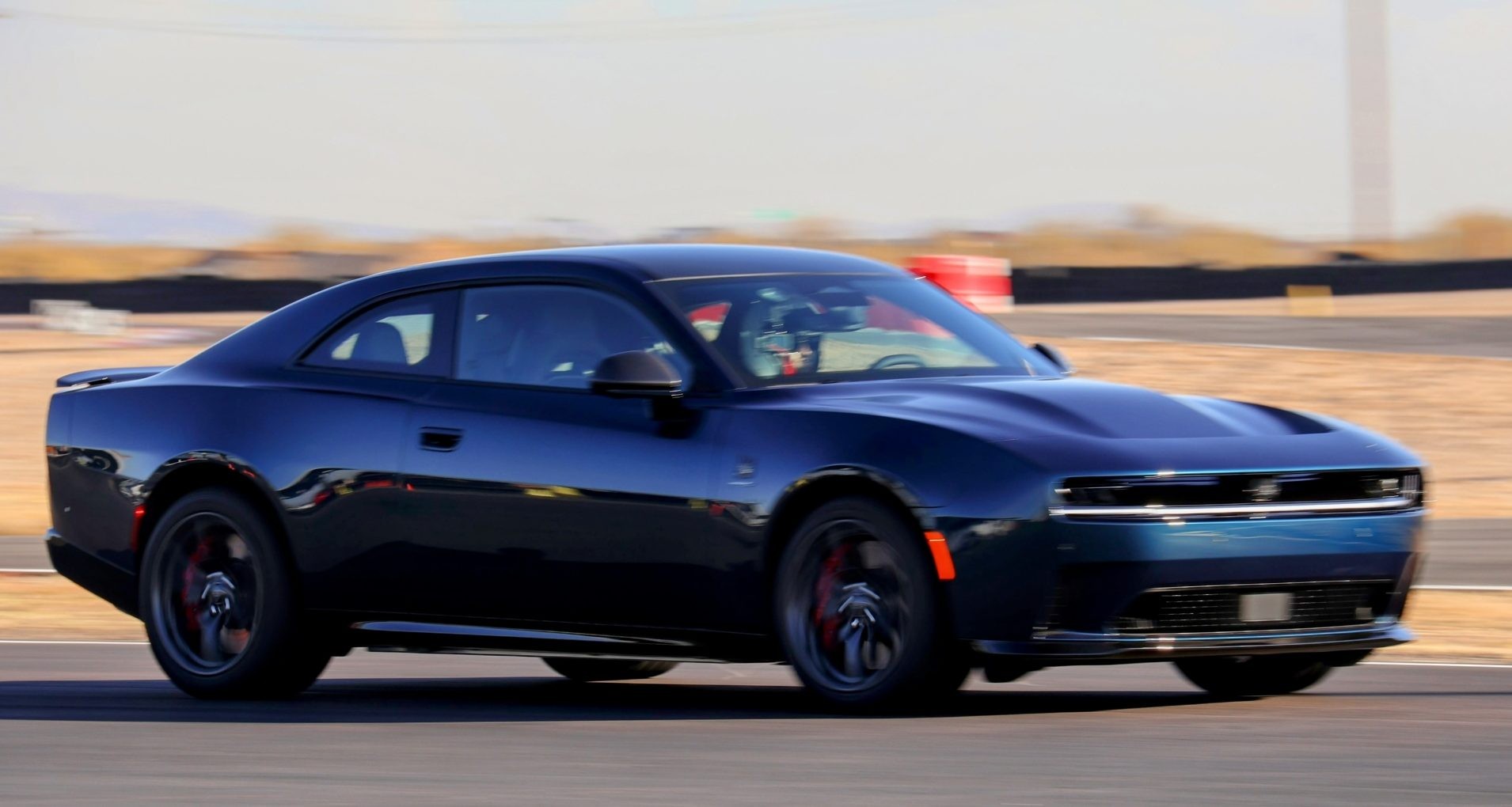 Img 8715~2
Img 8715~2
Alternatively, the Charger Daytona can be considered a more affordable, spacious, and uniquely styled alternative to crossover coupes like the BMW X6M or Porsche Cayenne Coupe.
The initial Charger Daytona models are not inexpensive, with the R/T starting at $61,590 and the Scat Pack at $75,185. While pricier than the 2023 Scat Pack Wide Body Charger, the new Scat Pack outperforms the old Hellcat Redeye, which cost $95,000.
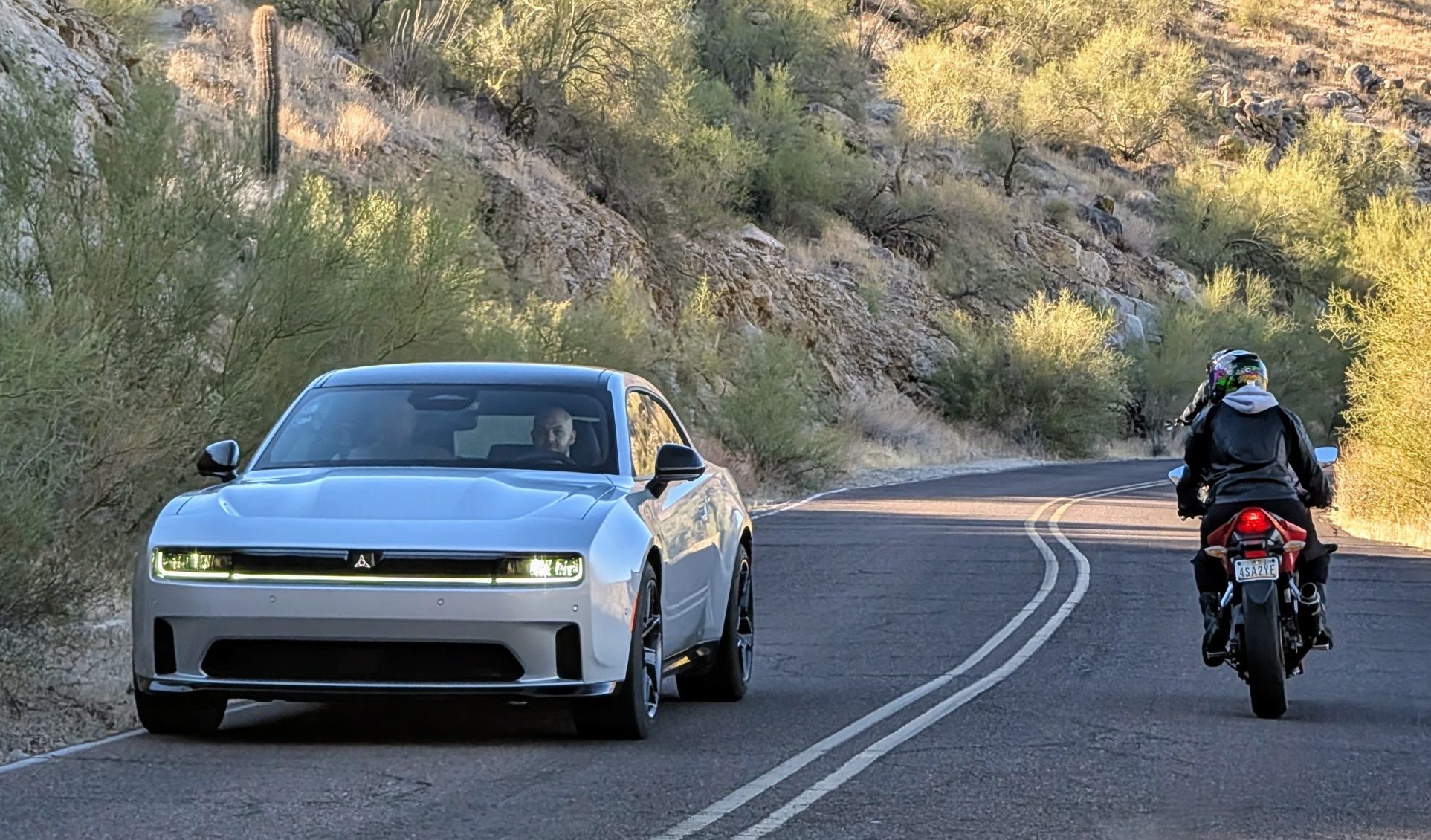 Pxl 20241205 172632161
Pxl 20241205 172632161
Battery modules for the Charger Daytona will initially come from Samsung’s Hungary factory, making it ineligible for US federal tax credits for purchases, though leases may qualify. Stellantis and Samsung’s Indiana battery factory, expected to open in 2025, could change credit eligibility in the future, pending policy developments.
Final Verdict: The Charger EV Ushers in a New Era of Muscle
After a day with the Dodge Charger Daytona, it’s evident that it successfully carries the muscle car torch into the electric age. The Scat Pack is the quickest Charger ever, matching Vipers and only surpassed by Challenger Demons. While lacking a V8’s subtle rumble, the Fratzonic sound is engaging, and the Charger EV offers unexpected practicality.
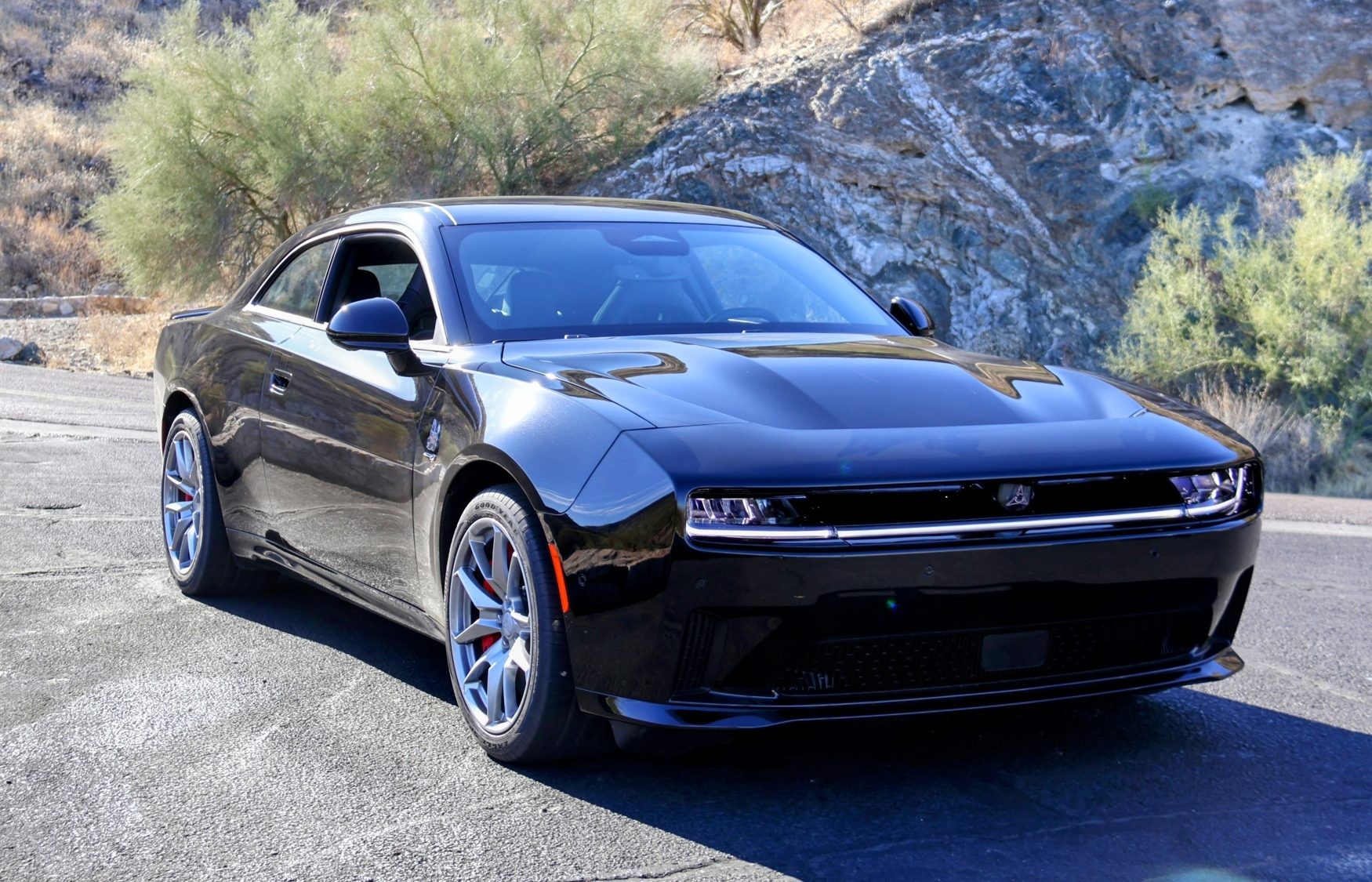 Img 8318~2
Img 8318~2
The challenge for Dodge lies in the inherently emotional nature of muscle car purchases. While the Charger Daytona isn’t a necessity, it’s undeniably desirable. V8 loyalists may remain unconvinced, but those willing to experience this electric muscle car firsthand might discover a new appreciation for American e-Muscle, potentially extending Dodge’s golden era into the electric future. The Charger EV isn’t just an electric car; it’s a Charger, reimagined for the 21st century.
